ASUSTeK Computer V66 GSM Cellphone User Manual 0 cover pmd
ASUSTeK Computer Inc GSM Cellphone 0 cover pmd
Users Manual Revision 2
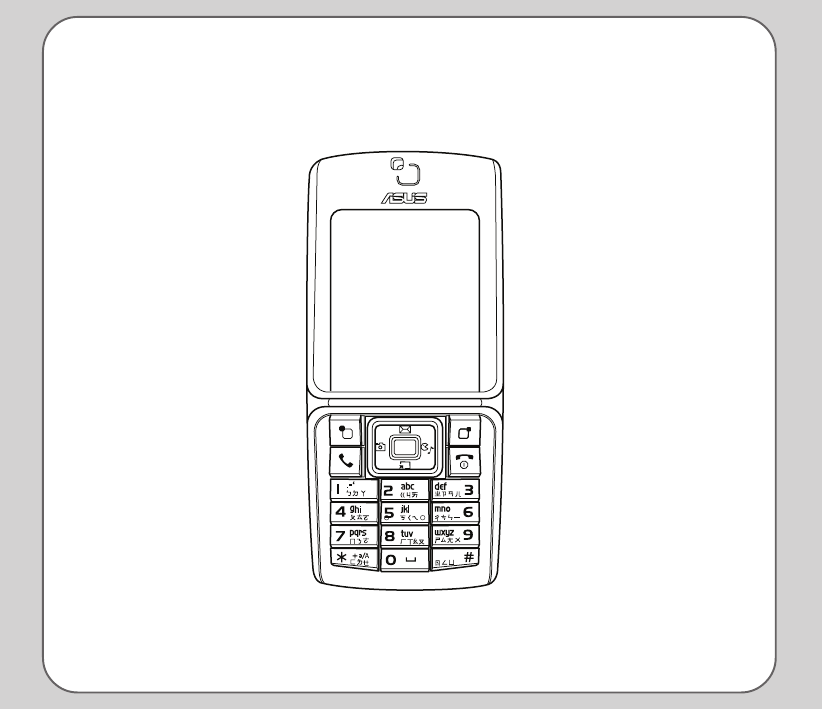
Asus V66
User Manual

Contents
Welcome 5
Left View 6
Package Contents 6
Overview 7
Features 7
Specifications 9
Menu Map 9
Inserting the SIM card,
mini SD card, and battery 11
Getting Started 11
Charging the battery 12
Low Battery Indicators 12
Turning the phone on/off 13
Function Keys 13
Unlocking the keypad 14
Standby Mode 15
Using the Menu 16
Text Entry 17
Basics 17
Choosing text entry methods 18
Calls 20
Making a call 20
Making International Calls 20
Answering a Call 20
Answer Mode 20
Canceling an Incoming Call 21
Diverting a Call 21
Redialing a Number 21
Call Logs 21
Returning a Missed Call 21
Call Log Options 22
Deleting Call Logs 22
Call Time/Cost 22
Options During a Call 23
Other call options 23
Adding Contacts 24
Adding a New Entry 24
Phonebook 24
Searching for a Contact 24
Quick Search 24
Search Entry 24
Copying and Moving 25
Deleting Contacts 25
Caller Groups 26
Extra Number 27
Phonebook Settings 27
My vCard 28
SMS 29
Composing an SMS Message 29
Messages 29
Common Words 30
Message Settings 30
SMS Counter 31

MMS 31
Writing an MMS Message 31
Viewing an MMS Message 32
Using Templates 32
Message Settings 32
Chat 33
E-mail 33
Voice Mail 34
Broadcast Message 34
Preferred Input 34
Settings 35
Manner 35
Manner Settings 35
Phone Settings 35
Shortcuts 35
Themes 36
Phone 36
Time and date 36
Handset Timer 36
Language 37
Preferred Input Method 37
Default Encoding Type 37
Display Settings 37
Greeting Text 37
Speed Dial 37
Arrow Key Settings 37
Auto Update of Date and Time 38
Call Settings 38
Hide My Number 38
Call Waiting 38
Call Forwarding 39
Call Barring 39
Line Switching 39
Call Time Reminder 39
Call Time Display 40
Auto Redial 40
Closed User Group 40
Call Filter 40
Network Settings 41
Network Selection 41
Preferred Network 41
Band Selection 41
GPRS Connection 41
Security Settings 42
SIM Lock 42
Phone Lock Code 42
Auto Keypad Lock 42
Fixed Dialing 42
Barred Dialing 42
Change Password 43
Factory Settings 43
Taking Photos 44
Camera 44
Zoom Function 44
Viewing and Managing
Photos 44
Photo Capture Settings 45
Camera Settings 45
Image Settings 45
Effect 46
Add Frame 46
Multi-Capture 46

Capture Timer 46
Default Storage 46
Restore Default 47
Recording Videos 47
Zoom Function 47
Viewing and Managing
Videos 47
Full-Screen Mode 48
Rewind and Fast Forward 48
Video Playback Speed 48
Volume 48
Capturing a Still Photo 48
Video Capture Settings 48
CamcorderSettings 48
Video Settings 49
Effect 49
CamcorderSettings 49
Default Storage 49
Restore Default 50
Media Center 51
Audio Player 51
Adding music files 51
Editing Music Files 51
FM Radio 52
FM Radio Options 52
Java 53
Java Settings 53
Games 54
Game Setting 54
Melody Composer 54
File Manager 55
Organizer 55
Viewing drive contents 55
Alarm 56
Calendar 56
Tasks List 56
Calculator 57
World Clock 57
Sound Recorder 57
Image editor 58
Stopwatch 58
Units Converter 58
Currency Converter 58
Health Manager 59
Service Provider Settings 60
WAP 60
Network 60
Browsing WAP pages 60
Scrolling 60
Viewing Links 60
WAP Settings 60
Data Account 61
Appendix 62
Additional Information 62
FCC Regulations 62
European Notice 62
RF Exposure Information (SAR) 63
Proper Disposal 64
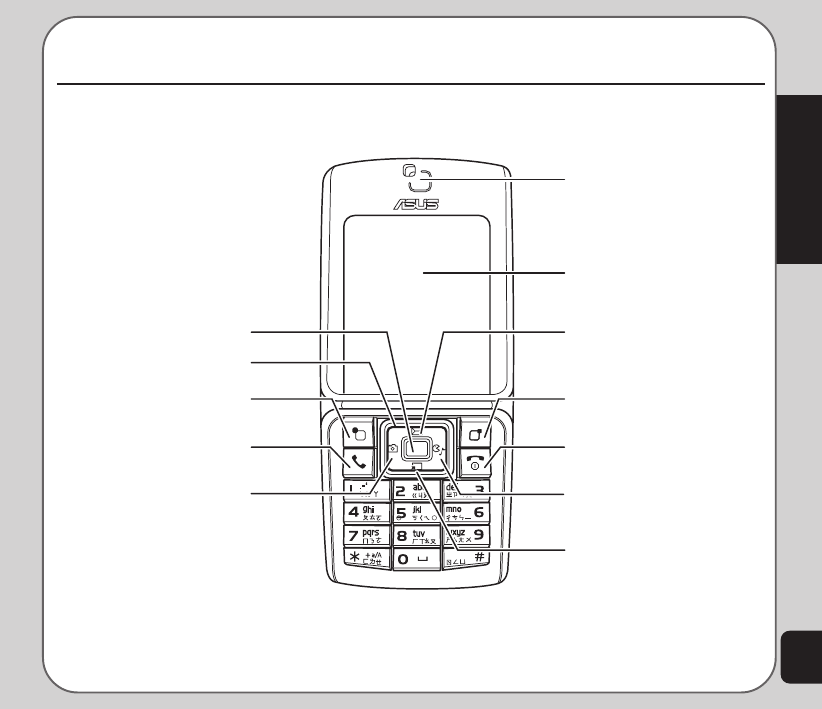
5
Welcome
Welcome
Congratulations on your purchase of an Asus V66 cell phone. The following illustration displays the
features found on the front of your phone.
Speaker
Screen
Up joystick key: Displays the
SMS inbox; scrolls up through
menu items
Right soft key: Displays phone
book when idle; selects right menu
items
Power/end key: Turns power on or
off; ends a call; exits menu
Right joystick key: Displays the
Media Center menu; scrolls right
through menu items
Down joystick key: Displays your
shortcuts menu; scrolls down
through menu items
Left soft key: Displays the main
menu; selects left menu items
Call key: Answers a call; displays
previously dialed numbers
Left joystick key: Displays the
camera menu; scrolls left through
menu items
Enter key: Displays the main menu;
confirms selection of a menu item
Joystick: Includes up, down, right,
left keys for on-screen navigation
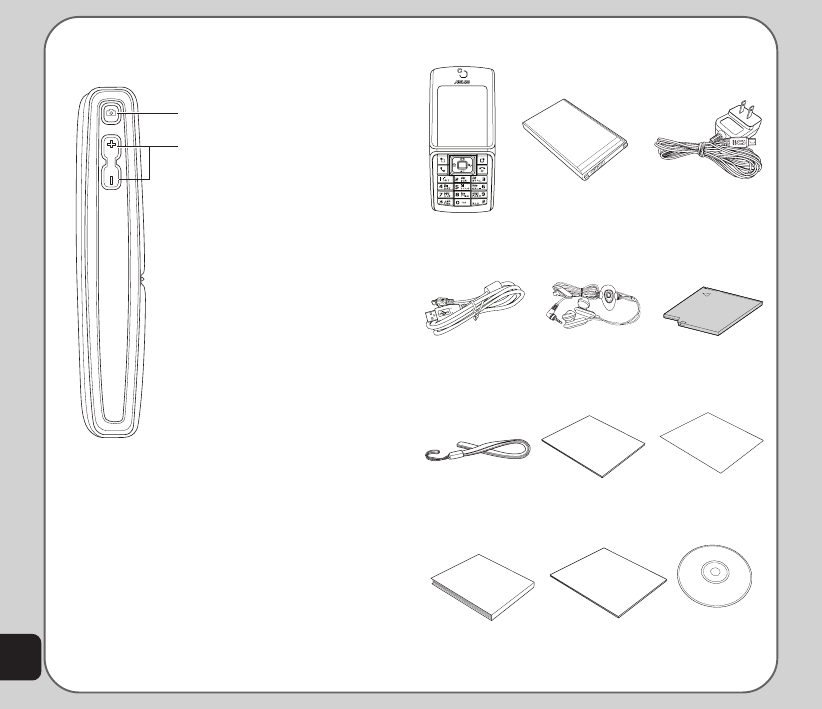
6
Left View Package Contents
warranty card
User Manual
Quick Start Guide
V66 handset 720 mAh Li-ion
battery Travel charger
Stereo headset Mini-SD card
Accessory chain
Handset Manager
manual
Warranty card
User manual
Quick start guide
Handset Manager
CD-ROM
Captures photos
Increases or decreases the volume
for calls, key tones, or playing
media files.
USB cable
Handset Manager
Manual

7
Welcome
Overview
The V66 is a stylish and fashionable new phone from Asus, with all the functions and utilities to
make it a useful tool in today’s mobile world. The V66 comes equipped with a built-in camera,
MMS/SMS messaging capability, organizer, java games, audio player, WAP, GPRS, and a mini SD
card slot. In addition to the internal 30 MB phone memory, the mini SD card provides additional
memory where you can store your contact information, messages, text, graphics, and audio files.
The V66’s audio player enables you to play back your favorite music.
Features
• Wide variety of calling and messaging functions
• Built-in camera
• Media center with audio player, FM radio receiver, and games for your entertainment
• MMS and SMS messaging capability
• Personal information organizer with alarm, calendar, calculator and other useful tools to
manage your time
• WAP and GPRS capability to check e-mail or browse web services
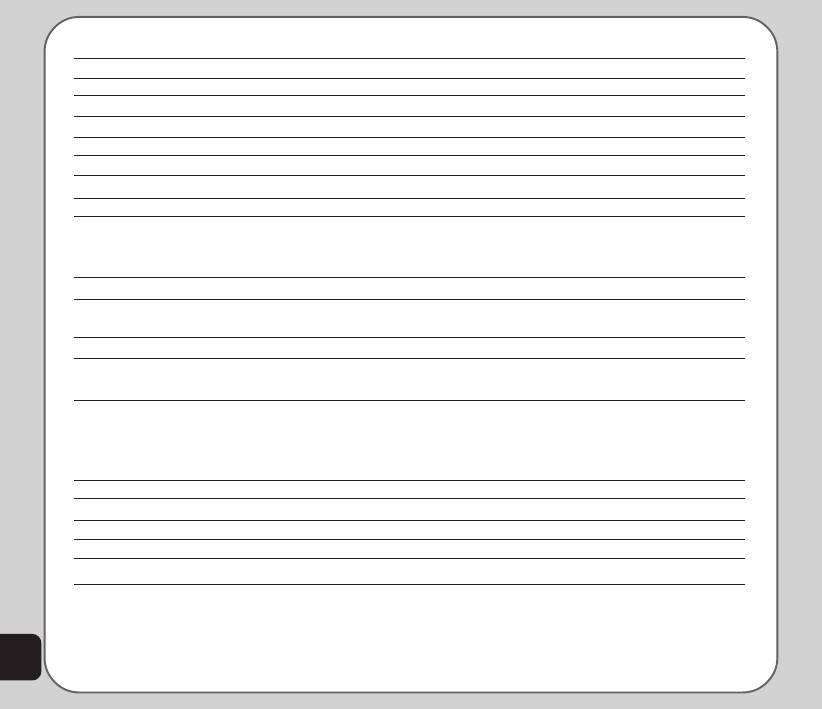
8
Specifications
System supported GSM900/1800/1900, Class 10
Size 99.8 x 43.8 x 18.7 mm
Weight 90g
Battery 720 mAh Li-ion
Standby Time 200 ~ 300 hours
Talk Time 2.5 ~ 4 hours
Color Silver, Orange, Blue
Display 1.8-inch, 256K colors, TFT, 128 x 160
Camera 300K pixel CMOS
Supports video recording
4/6/9/16 continuous shots
WAP Supports WAP 1.2.1 and WAP 2.0
Java Supports J2ME (CLDC + MiDP 1.0.3)
Built-in Java games
Messaging Supports SMS, EMS, MMS
Ring tone 64 polyphonic ring tones
Supports SMF (standard MIDI format) and MP3
Phone book 300 sets + SIM card
Caller ID with photos
10 sets for speed dialing
10 sets for voice messaging
Record Record an unlimited number of files, up to memory capacity
Calendar 10 sets
Internal Memory 30 MB
External storage Mini-SD card
PIM tool Alarm, calculator, worldwide clock, calendar, note, currency, timer, etc.
Note: All specifications are subject to change without further notice.

9
Welcome
Menu Map
Calls
• Missed Calls
• Dialed Calls
• Received Calls
• Delete Call Log
• Call Time
• Call Cost
• SMS Counter
• GPRS Counter
Phone Book
• Quick Search
• Search Entry
• Add New Entry
• Copy All
• Delete
• Delete All
• Caller Group
• Extra number
Owner Number
Service Dial Number
SOS Number
• Settings
Memory Status
Preferred Storage
Fields
My vCard
Messages
• SMS
• MMS
• Chat
• Email
• Voice Mail Server
• Broadcast Message
• Preferred Input
Settings
• Shortcuts
• Themes
• Phone Setup
Time and Date
Schedule Power On/Off
Language
Preferred Input
Default Encoding
Display Characteristics
– Wallpaper
– Screen Saver
– Show Date and Time
– Show Owner Number
Contrast
Greeting Text
Speed Dial
Dedicated key
Auto update of date and time
• Call Setup
Caller ID
Call Waiting
Call Divert
Call Barring
Line Switching
Call Time Reminder
Call Time Display
Auto Redial

10
• My Album
• My Video
Media Center
• Audio Player
• FM Radio
• Java
• Java Setting
• Games
• Game Setting
• Melody Compose
Organizer
• Alarm
• Calendar
• To Do List
• Calculator
• World Clock
• Sound Recorder
• Image Editor
• Stopwatch
Typical Stopwatch
nWay Stopwatch
• File Manager
• Units Converter
• Currency Converter
• Health
BMI
Menstrual
Network
• Service Provider Settings
•WAP
• Data Account
Manner
Closed User Group
Call Filter
• Network Setup
Network Selection
Preferred Networks
Band Selection
GPRS Connection
• Security Setup
SIM Lock
Phone Lock
Auto Keypad Lock
Fixed Dial
Barred Dial
Change Password
• Restore Factory Settings
Camera
• Capture
To Image Viewer
Camera Settings
Image Setting
Effect Setting
Add Frame
Cont Shot
Delay TimerStorage
Restore Default
• Video Recorder
To Player
CamCorder Setting
Video Setting
Effect Setting
Storage
Restore Default
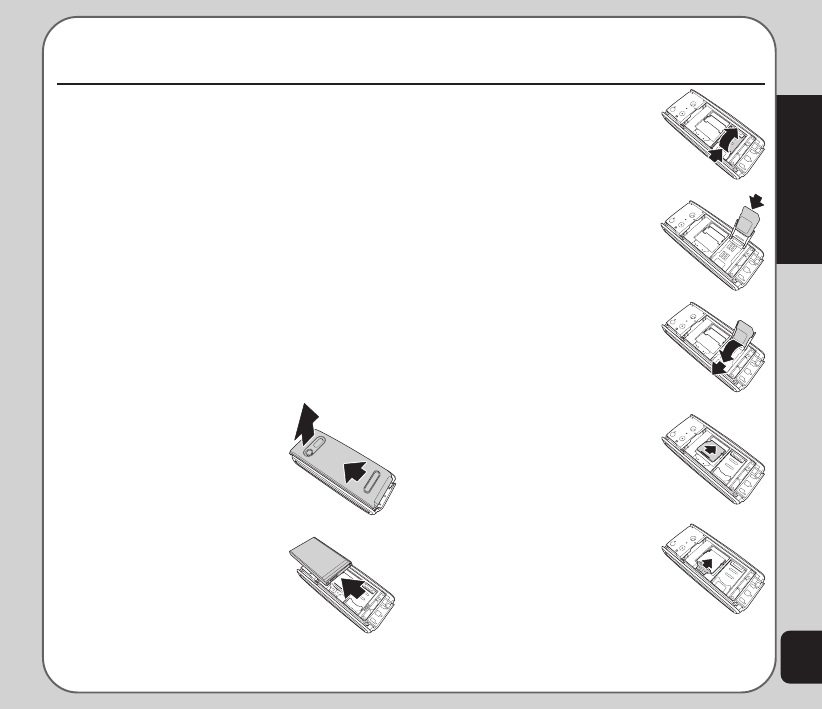
11
Getting Started
Getting Started
Inserting the SIM card, mini
SD card, and battery
When you register with a service provider, you
receive a SIM card (Subscriber Identity Module
card). Your phone must have a SIM card in
order to make calls. The SIM card is a
computer chip that contains your phone
number, phonebook information, and service
provider information. Handle it with care and do
not bend it or expose it to static electricity or
dirt. Be sure the power to your phone is off
before you insert your SIM card.
The SIM card and the mini SD card slots are
situated underneath the battery. To insert the
cards, follow these steps:
4.Insert the SIM card into
the holder with the correct
orientation. The gold
contacts of the SIM card
should face down.
1.Press the back cover and
slide the cover off to
remove it.
2.Remove the battery. The
battery compartment has
a notch at the top to make
it easier to grasp and
remove it.
3.Lift the SIM card holder
using your fingernail.
5.Place the SIM card holder
back in place.
6.To place the mini SD card,
place the card in the slot
with the gold contacts
facing down.
7.Secure the mini SD card
in place with the metal
clasp by moving it towards
the card.
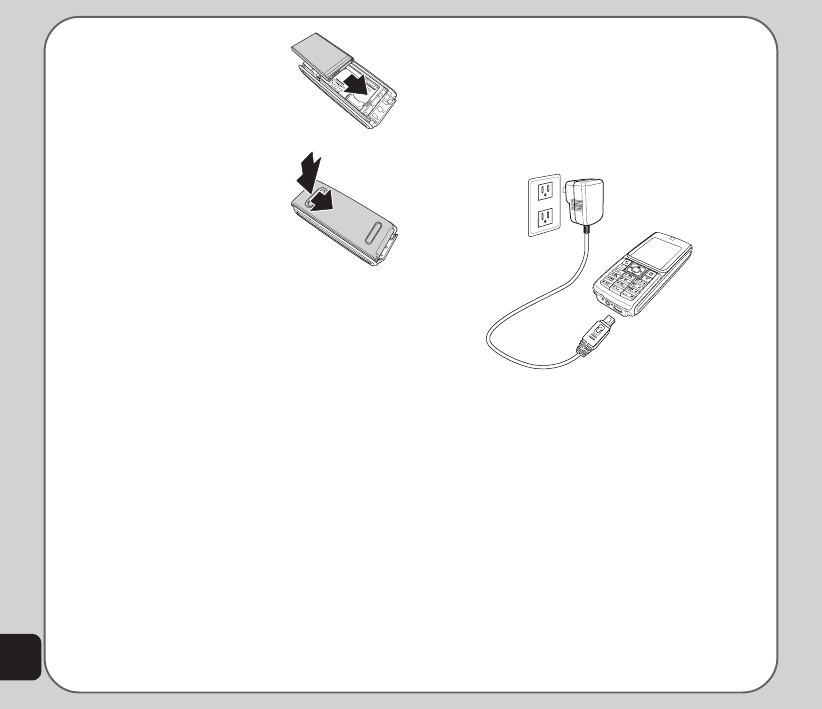
12
8.Place the battery back into
the battery compartment
noting the correct polarity.
9.Replace the battery cover.
Place the back cover
against the phone case,
then slide it upwards to
lock into place.
Charging the battery
1.Connect the charger plug to a power
outlet.
2.Connect the charger to the socket at the
bottom of the phone. The connector can
only be inserted one way.
Note: For best battery performance, allow the battery to charge
and discharge completely the first few times you use it.
Low Battery Indicators
The battery indicator in the upper right corner of
the screen indicates how much charge remains
in the battery. As additional reminders, when
the battery is low, the phone emits a double
beep. The message “battery low” also appears
on the screen.
Note: If the battery has been deeply discharged, it may take
several minutes before the battery level indicator is displayed.
Caution:
• Use only the battery recommended by the
manufacturer. Using an incompatible battery with the
phone may cause risk of an explosion.
• Dispose of the used batteries as instructed by the
manufacturer or ask your local authorities for
assistance.
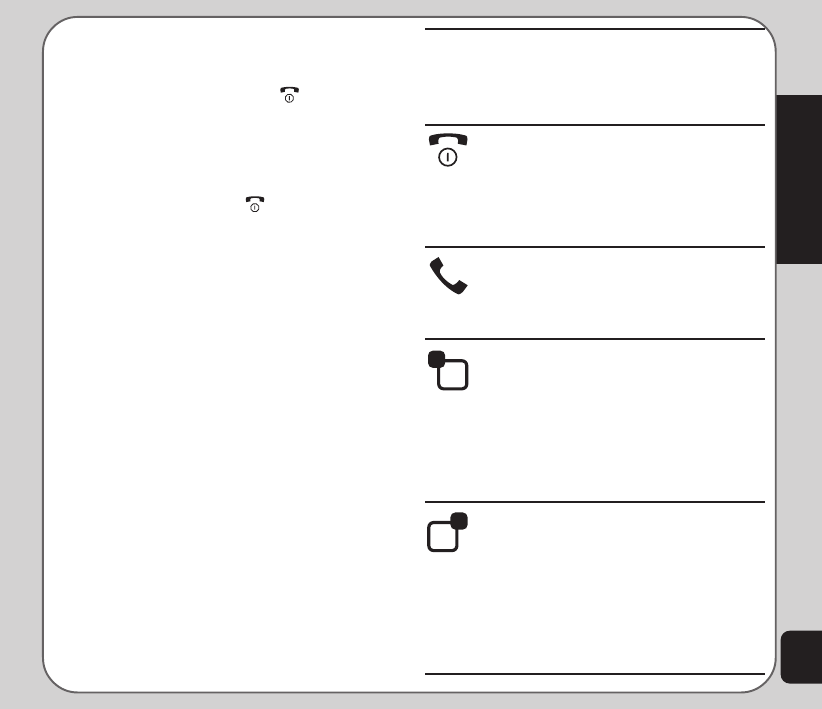
13
Getting Started
Turning the phone on/off
To turn the phone on, do the following:
1.Hold down the power/end key until the
screen lights up.
2.If needed, enter your SIM card PIN code
and press the Enter key.
To turn the phone off, do the following:
• Press the power/end key and hold until
the phone shuts down.
Note: If you set an alarm using the Organizer menu and turn
off the phone, the phone will turn itself on when the alarm is
activated. After you disable the alarm, the phone prompts you if
you want to keep the phone turned on or off. See the Organizer
section for details about setting an alarm.
Call key
• Press to dial or answer calls.
• Hold to redial the last number
called.
Function Keys
The following table lists the phone keys and
their functions.
Power/end key
• Hold to turn the phone on or off.
• Press to stop an incoming call or
cancel a call you are dialing.
• Press to exit a menu or submenu.
Left soft key
• Press to display the menu.
• Press to perform the function
currently displayed in the lower left
corner of the screen.
• Press to move left while navigating
menus.
Right soft key
• Press to view phone book when
the phone is in idle mode.
• Press to perform the function
currently displayed in the lower
right corner of the screen.
• Press to move right while
navigating menus.
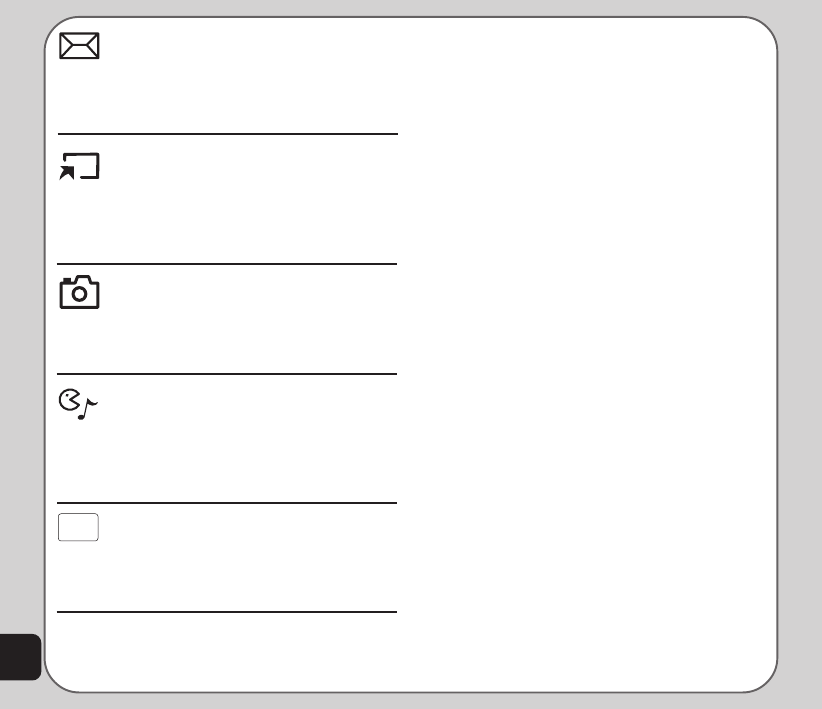
14
Up joystick key
• Press to scroll up through menu
items.
• Press to display the SMS inbox when
the phone is in standby mode
Down joystick key
• Press to scroll down through menu
items.
• Press to display a list of your
shortcuts when the phone is in
standby mode.
Left joystick key
• Press to scroll left through menu
items.
• Press to display the Camera menu
when the phone is in standby mode.
Right joystick key
• Press to scroll right through menu
items.
• Press to display the Media Center
menu when the phone is in
standby mode.
Enter key
• Press to display the main menu.
• Press to confirm selection of a menu
item when the phone is in
standby mode.
Unlocking the keypad
The keypad of the phone can be locked
automatically after a specific time interval to
prevent tampering or accidental pressing of any
buttons. Refer to Security Setup in the Settings
section to learn how to lock the keypad.
To unlock the keypad, do the following:
1.The screen shows Unlock in the lower
right corner of the screen. Select this
option by pressing the right soft key which
is just under the word Unlock on the
screen.
2.Press the # key on the keypad to unlock
the keypad as prompted on the screen.
The keypad is then unlocked.
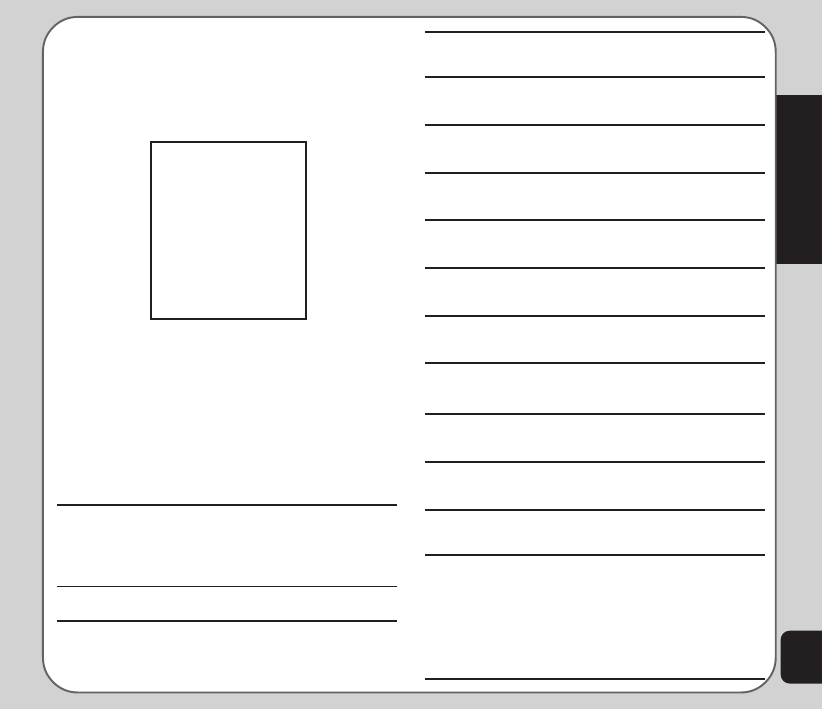
15
Getting Started
Standby Mode
When your phone is on, but not in use, it is in
standby mode. During standby mode, the upper
part of the display screen shows various icons.
Vertical bars indicate the strength of the
GSM network signal. Four bars
indicates that your current position has
the best reception.
The date and time is displayed at the lower
center of the screen. Beneath the date and time
are Menu in the left corner and Name in the
right corner. Press the left soft key to view the
main menu, and the right soft key to view the
phone book.
The Standby screen icons are as follows:
Line 1 or line 2 is selected for calls.
Alarm has been set.
A text message has been received.
A multimedia message has been
received.
The SMS memory is full.
Indicates battery charge status.
Phone is using GPRS network.
Phone is in roaming mode.
Ringtone is enabled.
Ringtone is disabled.
Indicates the manner selected for
the phone.
Indicates a missed call.
Call divert is enabled,
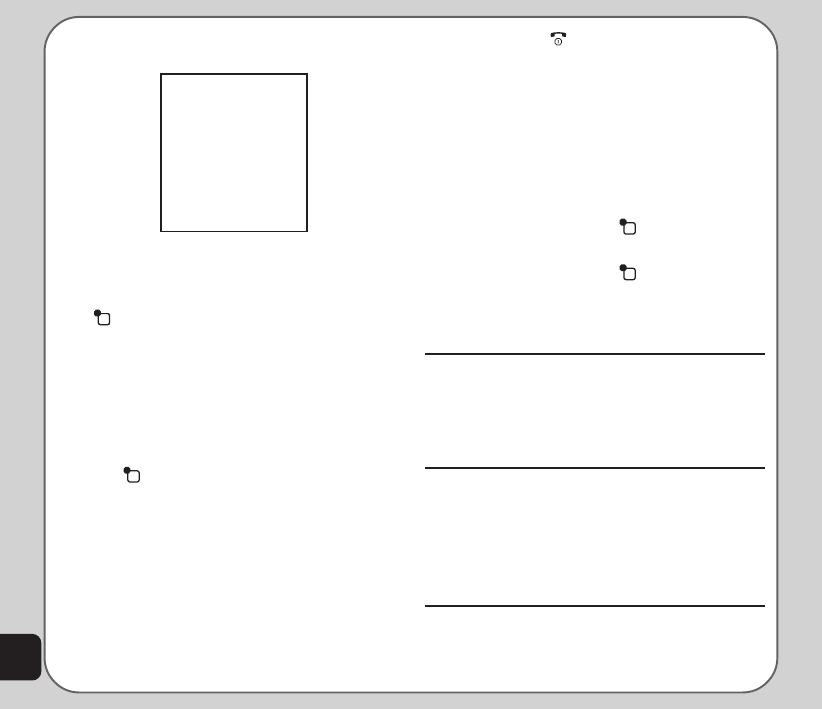
16
Power/End key.
• Use the joystick keys to select the
submenu items and options. The right and
left soft keys can also be used for
selecting various options in submenus.
For example, to view missed calls, do the
following:
1.Use the joystick keys to select Calls from
the main menu.
2.Press the left soft key to confirm the
selection. The Calls submenu opens.
3.Press the left soft key to select the
Missed Calls option. A list of missed calls
opens.
Follow these tips to navigate through the menu
and menu options.
• To view the menu, press the left soft key
or the Enter key.
• Use the up, down, left, and right joystick
keys to move through the various menu
items.
• The lower left corner of the screen
displays the name of the menu item
currently selected while the lower right
corner displays Back. Press the left soft
key (situated under the name of the
menu item) to select the menu item. Press
the right soft key which is situated under
Back to exit the menu.
• Each menu item also displays a small
number beneath it. You can also press the
number corresponding to a menu item, on
the keypad to select the item.
• To quickly exit from the menu, press the
Using the Menu
Network: Enables you to specify the
WAP and data settings and set up
GSM and GPRS settings. Enables
access to the internet and to STK SIM
card services.
Messages: Gives you access to
messages received. Compose and
send text (SMS) and multimedia
(MMS) messages here. You can also
check email, chat, and broadcast a
message using this menu.
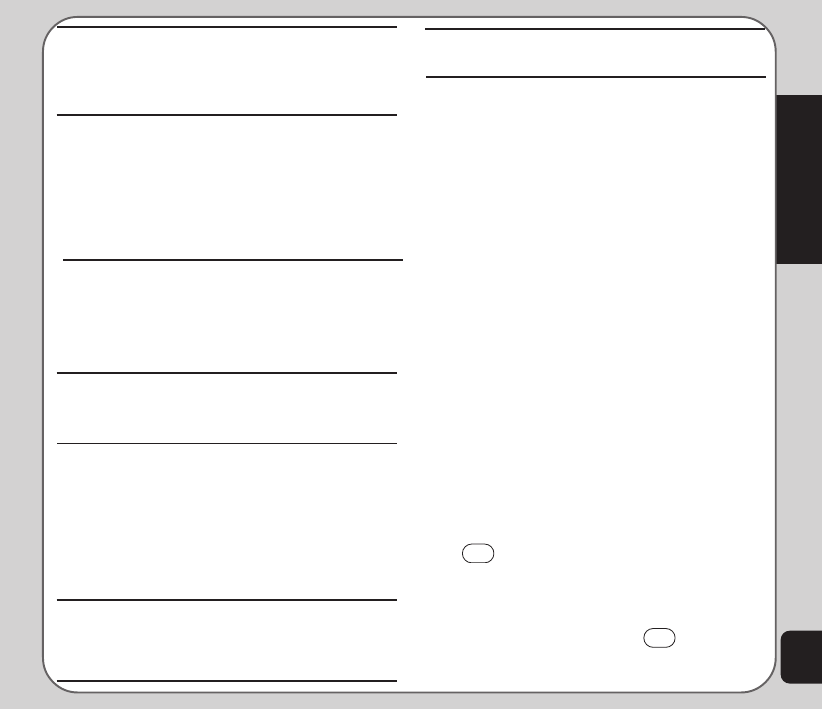
17
Getting Started
The following table provides a list of all the
main menu items:
Calls: Stores information about calls
made, received, and missed.
Text Entry
When you add names to your phone book,
send a text message, or use your WAP
browser, you need to enter text. Your cell phone
has several text entry methods. You can enter
letters individually or with predictive text entry,
which helps you complete words as you enter
them. You can enter letters in upper case, lower
case, or both, type simplified or traditional
Chinese characters, or insert symbols.
Basics
• Use the alphanumeric keypad to enter
letters and numbers. Each key is assigned
multiple characters.
• Select Clear, in the lower right corner of
the screen, to delete a letter if you make a
mistake.
• To enter spaces between words, press the
0
key. The 9 space symbol appears.
Press the enter key or press the right soft
key to select and enter a space.
You can also view, select, and enter other
symbols by pressing the
0
key.
Manner: Enables you to select and
customize the phone settings including
the ring tone, volume, ring type, and
answer mode.
Settings: Lets you adjust phone
settings such as call settings, themes,
shortcuts, network settings, and
security settings. You can also restore
all settings to their factory default from
this menu.
Camera: Enables you to take pictures
as well as record video with your
phone. You can also access all your
pictures and videos from this menu
item.
Media Center: Consists of an audio
player, FM radio, games, and a melody
composer.
Organizer: Contains useful tools
such as an alarm, a calendar for
scheduling appointments, a to do list,
and a simple calculator. You can also
record memos, edit simple images,
manage all your data using a file
manager, or convert units or currency
Phonebook: Enables you to manage
names and telephone numbers for
easy access and caller recognition.
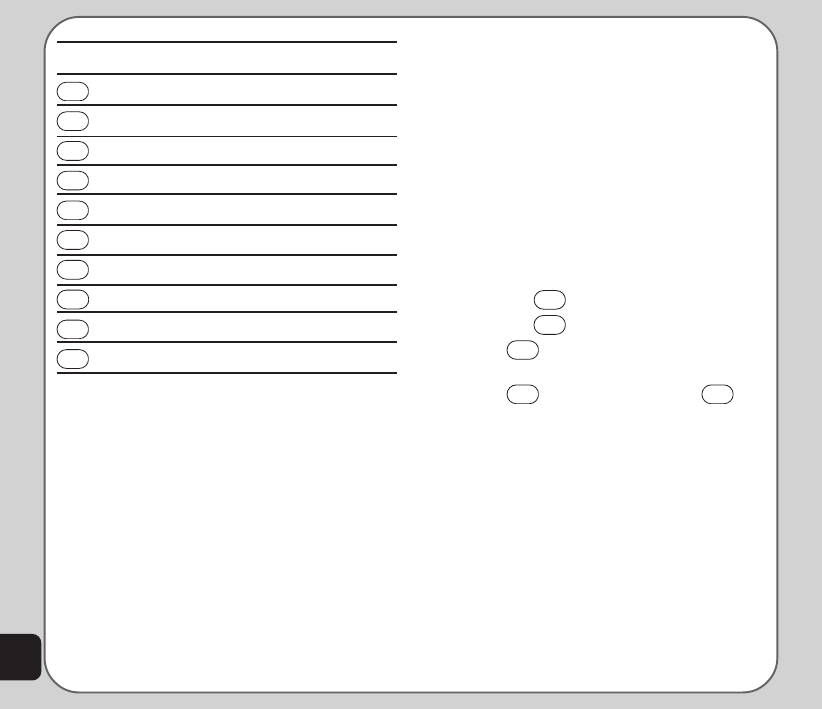
18
Key Assigned Characters
1
. , - ? ! ‘ @ : # $ / _ 1
2
A B C 2
3
D E F 3
4
G H I 4
5
J K L 5
6
M N O 6
7
P Q R S 7
8
T U V 8
9
W X Y Z 9
0
Space, 0
Choosing text entry methods
From any text entry screen, such as a text
message window, select Options > Input
Method. Select Multitap (ABC for upper case
abc for lower case letters or Abc for upper case
followed by lower case) for entering letters one
at a time. Select Smart (ABC, Abc, or abc) to
let the phone predict the words you are typing.
Multitap text entry
Multitap text entry enables you to enter
individual letters one by one. This is ideal for
adding a phonebook entry or entering a WAP
address.
When you press a key, the characters ssigned
to the key appear in the lower center of the
screen. Press the key repeatedly to scroll
through these characters. Pause for a moment
and the selected letter appears on the screen.
For practice, try entering text into a text
message (SMS) as follows:
From the menu, go to Messages > SMS >
Write Message. Before entering text, first
make sure that the entry method is set to
multitap. Press Option and select Multitap
abc. To enter the words “my phone” into the
text entry area, follow these steps:
1.Press the
6
key to select m.
2.Press the
9
key three times to select y.
3.Press
0
key, followed by the enter key
or right soft key to enter a space.
4.Press
7
to enter p, then press
4
two
times to enter h. Continue in this fashion
until the word “phone” is entered.
Smart text entry
Smart text entry is a predictive text entry
method. It uses a built-in dictionary to predict
the word you are typing. You can choose the
correct word by pressing the keys repetitively
and scrolling through the words suggested by
the phone. By reducing the number of
keystrokes, the smart text entry method helps
some users to type messages more quickly.
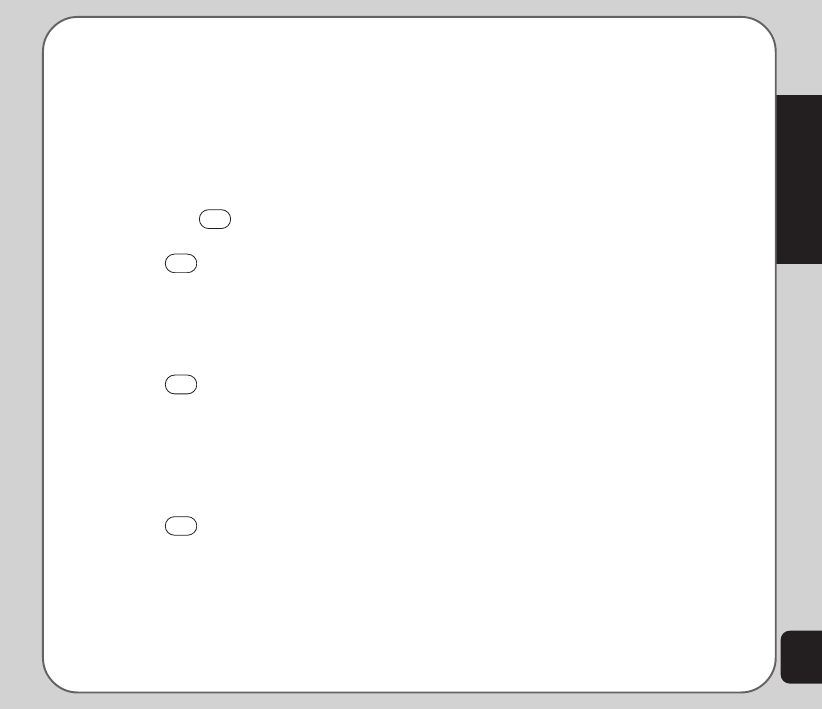
19
Getting Started
Whenever you press a key, a list of possible
characters or character combinations is
created. To enter text, use the up and down
joystick keys to find the character combination
you want. Press the right joystick key to
proceed entering the next character. If you
make a mistake, press Clear.
Here is an example of how to enter the word
“baby” using smart text entry.
1.First press the
2
key. The letter a
appears on the screen.
2.Press the
2
key again quickly to go to
the next suggestion which is ba. If you
press the up/down joystick keys, the
phone scrolls through all possible two-
letter combinations of the letters a, b, and
c.
3.Press the
2
key again quickly to
display three-letter combinations of the
letters a, b, and c.
4.Press the up/down joystick keys to scroll
through the possible words. When you
see the bab combination, press the right
joystick key to proceed to the next letter.
5.Press the
9
key and the letter x
appears. Press the up/down joystick keys
to scroll through letter options and
select y.
6.Press Option > Done when finished.
Note: For smart text entry to work properly, ensure the
language settings in your phone match the language you want
to type in. For setting language, see Phone Setup under
Settings.
Numeric text entry
Numeric text entry allows you to create a text
message composed of numbers. To use this
method, select Option > Input Method and
then select Numeric. Now you can directly
input the numbers using the keypad.
Symbols text entry
With this method, you can enter various types
of symbols. Select Option > Input Method >
Insert Symbols. A list of symbols is displayed.
Use the joystick keys to select the desired
symbol and select OK when done.
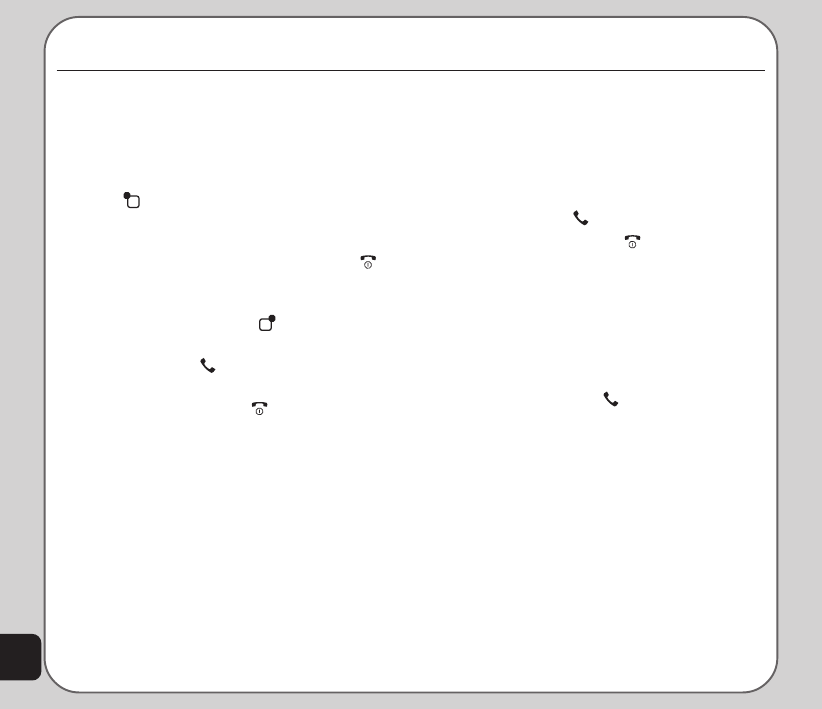
20
Answering a Call
When you receive a call, the phone alerts you
by sounding the ring tone and vibration
according to the specified ring tone and
vibration settings. To answer the call, do the
following:
1. Press the Call key to answer the call.
2. Press the Power/end key to end the
call and disconnect.
Alternately, select Option > Answer to answer
the call.
Answer Mode
The default setting for the phone is to answer
when you press the Call key. However, you
can also set the phone to pick up by pressing
any key. To enable the phone to answer a call
by pressing any key, select Manner and then
choose the manner setting that you want.
For example, if you select General, then
choose Personalize > Answer Mode > Any
Key. Set the Any Key option to On to enable
the setting.
Remember to Activate the manner setting to
make sure that the answer mode is set.
Calls
Making a call
Follow these steps to place a call:
1.Enter the number you wish to dial using
the keypad. If you make a mistake, select
Clear to delete at any time. The right soft
key is just under the word Clear on the
lower right screen; select this key to clear
a number.
2.Press and hold down the Power/end
key to cancel the call and return to
standby mode. Alternately, select Abort
using the right soft key to cancel the
call.
3.Press the Call key to connect the call
after you finish dialing the number.
4.Press the Power/end key to discon-
nect the call.
Making International Calls
To dial an international call, do the following:
1. First enter a + by holding down the * key.
2. After the +, enter the international access
code for the country you wish to dial,
followed by the telephone number
including the area code.
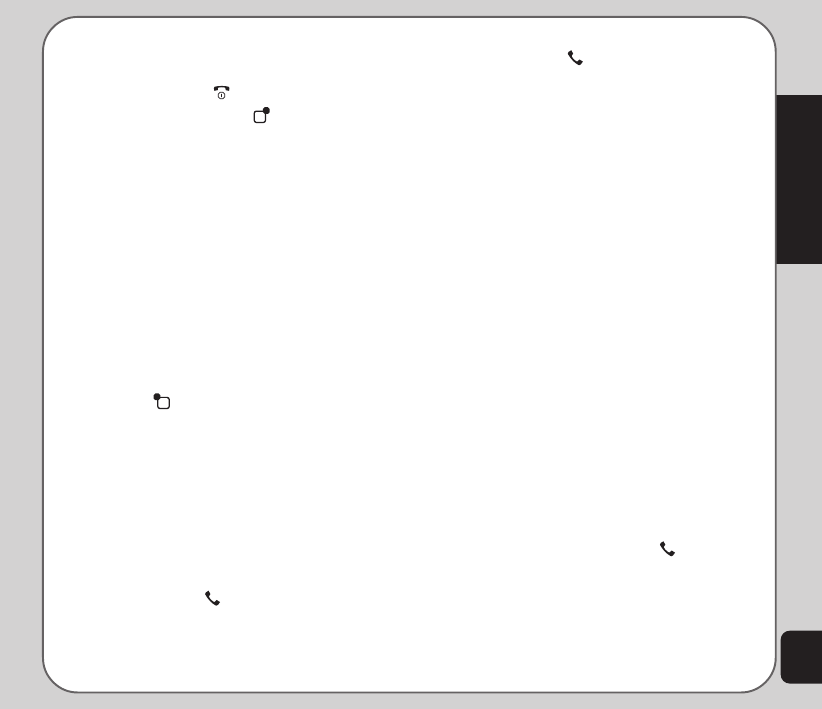
21
Calls
Canceling an Incoming Call
If you would like to cancel an incoming call,
press the Power/end key. Alternately, you
can press the right soft key to select the
Reject option to reject the call. Depending on
your service provider, the caller may be
transferred to your voice mail or may hear a
busy signal.
Diverting a Call
If you want to divert an incoming call to another
number, do the following:
1.When you receive the call, press Option
and then select the Deflect item.
2.Enter the phone number to which you
want to divert the call using the keypad.
Alternately, select Search using the left
soft key and then browse through the
phone book to select a number.
3.Select OK when done.
Redialing a Number
The phone provides a quick method to redial a
number that has been dialed previously. To
redial a number, do the following:
1. Press the Call key. A list of numbers
dialed previously appears, with the last
number dialed at the beginning of the list.
2. Select the number you wish to dial and
press the Call key to dial the number.
Dialed numbers can also be accessed from
Calls > Dialed Calls.
Call Logs
Call logs consist of information about missed,
dialed, and received calls. To view lists of
missed, dialed calls or received calls, select
Calls from the main menu. Then select Missed
Calls, Dialed Calls, or Received Calls to view
the type of calls you require. The number of
calls in a list is limited to 20 entries. Older calls
are dropped from the list when the limit is
reached. Most recent calls appear first in a list.
Returning a Missed Call
If you have missed a call, a message appears
on your standby screen to tell you a call was
missed. Select Read to see the most recent
missed calls. To view a complete list of missed
calls, do the following:
1.Select Calls > Missed Calls. A list of
missed calls is displayed.
2.Scroll through the list and select the
desired call. Press the Call key to call
the number.
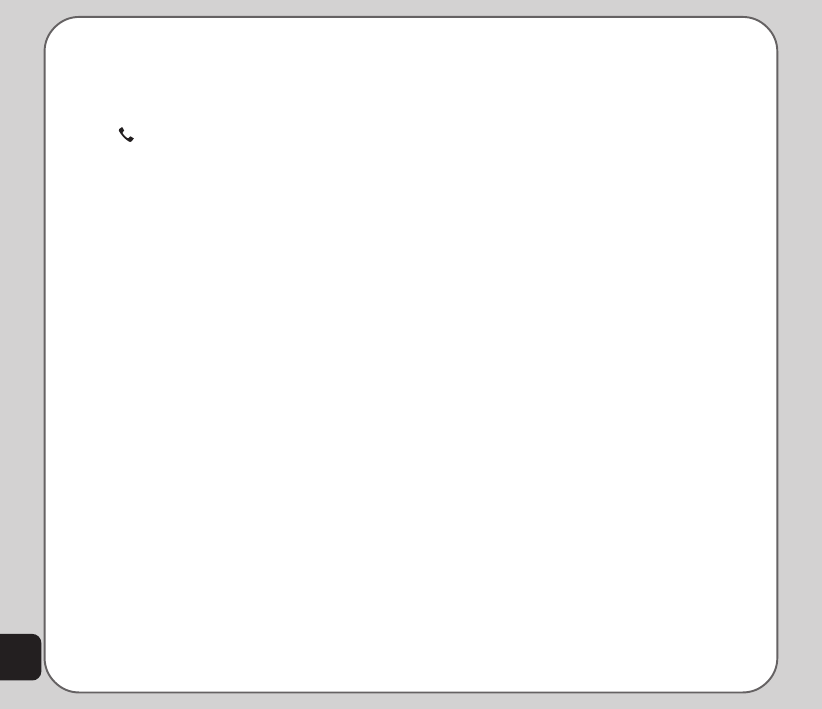
22
To view additional information, select a missed
call number from the list and select OK. The
date, time, phone number of the calling party as
well as the number of times the call was
received is displayed. To call the number, press
the Call key. You may also select Option >
Dial to call the number.
To dial a number from the received or dialed
call logs, follow the same procedure as for
returning a missed call.
Call Log Options
While viewing a number from the dialed,
received or missed call logs, you can select
Option to view other functions as follows:
• Delete: Deletes the number from the list.
Deleting can create space for other
numbers.
• Save to Phone book: Adds the number to
the phonebook.
• Dial: Calls the selected number.
• Edit: Modifies the number. This may be
useful for adding an area code, for
example. Modify the number and then
select Save to save the number to your
phone book.
Deleting Call Logs
To delete call logs, do the following:
1.Select Calls from the main menu and then
select Delete Call Log.
2.Select from one of the following options:
Missed Calls
Dialed Calls
Received Calls
Delete All
Call Time/Cost
Depending on the type of service package you
have, you may pay according to the length of
your calls. Some users like to monitor the
length of their calls. Your phone offers a
convenient and accurate way to keep track of
length and costs of calls using Call Time and
Call Cost.
Select Calls > Call Time to see the various call
times. You can view the Last Call Time, Total
Sent, and Total Received times. You can also
reset the timer using the Reset All Time option.
Select Calls > Call Costs to calculate your
phone bill. This feature requires the phone PIN
numbers provided by your service provider. Use
the Max Cost and Price Per Unit options to set
the call rates. Select the Last Call Cost and
Total Cost options to view the call costs. Reset
the call costs using the Reset Cost option.
You can even set a limit for call length and have
a tone sound to remind you that the time limit
has been reached. To do this, go to Settings >
Call Setup > Call Time Reminder. This is a
reminder function only, and does not close a
call. You can specify a single reminder within

23
Calls
an interval of 3000 seconds or a periodic
reminder for a period between 30 ~ 60
seconds.
To view the call time during a phone call, select
Settings > Call > Call Time Display and set it
to On.
Options During a Call
When a call is in progress, you have the
following options available:
• Hold / Retrieve: Puts a current call on
hold or retrieves a call on hold.
• End: Ends a call.
• New Call: Places a new call.
• Phone Book: Displays the phone book
menu. You can use this function to check
a contact phone number during a call.
• SMS: Displays the messages menu. This
is convenient in loud speaker mode if you
want to send an SMS during a call.
• Sound Recorder: Starts recording the
conversation. To stop recording, select
Stop.
• Mute: Mutes a call.
• DTMF: Allows the recipient to hear key
press tones.
• H-Free: Switches to hands-free (loud-
speaker) mode.
Other call options
There are other advanced call features in your
phone, found in the Settings > Call submenu.
There are features for call waiting, to show or
hide your number when making calls, control
the time of calls, conveniently redial numbers,
or select a line.
These features are discussed in the “Call
Settings” section of the Settings chapter in this
manual.
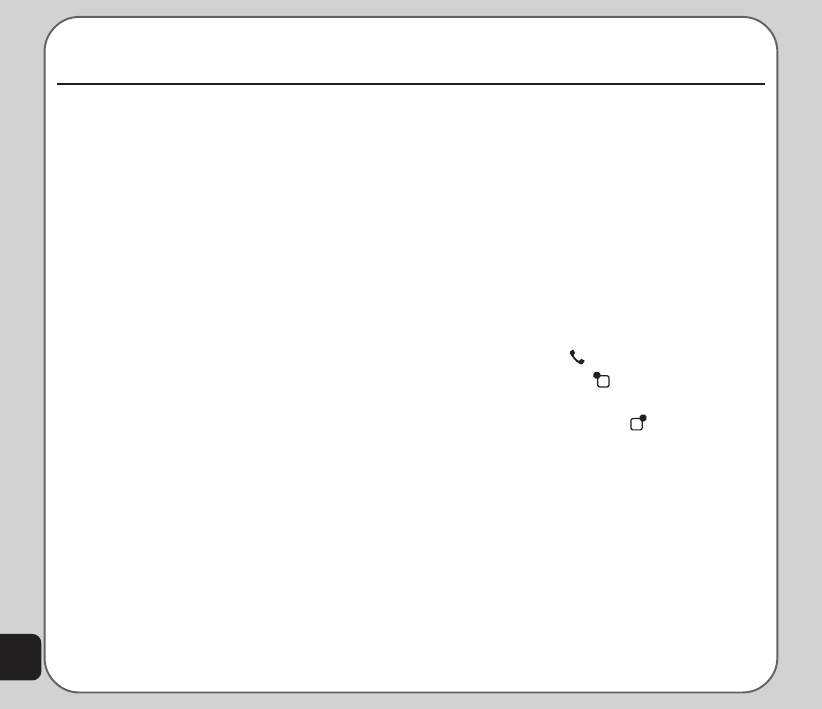
24
Phonebook
Adding Contacts
Read this section to learn how to add new
contacts to your phonebook
Adding a New Entry
Use the Add function to add a new contact to
your phonebook. Follow these steps to add a
new entry:
1. From the main menu, select Phonebook
> Add.
2. Select the storage location. Select SIM or
Handset then press the enter key.
NOTE: If you choose to add the new entry to the phone, it will
not appear in the phonebook if you transfer your SIM card to
another phone. If you choose to add the new entry to the SIM
card, you can add only a name and a number.
3. Enter a name and number using the
keypad. If you are adding the new entry to
the phone, you can also add a home
number, company name, e-mail address,
office number, fax number, an associated
sound or picture stored in the phone
memory, and put the contact in a caller
group.
Searching for a Contact
Read this section to learn how to search for
contacts in your phonebook.
Quick Search
Follow these steps to perform a Quick Find
search:
1. From the main menu, select Phonebook
> Quick Find.
A list of all the contacts in your phonebook
is displayed in alphabetical order.
2. Use the joystick to highlight a contact
3. Press the Call key to call the contact,
or the left soft key to display options
for that contact.
4. Press the right soft key to return to the
previous screen.
Search Entry
Use the Search Entry function to search for a
specific entry. Follow these steps to use the
search entry function:
1. From the main menu, select Phonebook
> Search Entry.
The data entry screen opens.
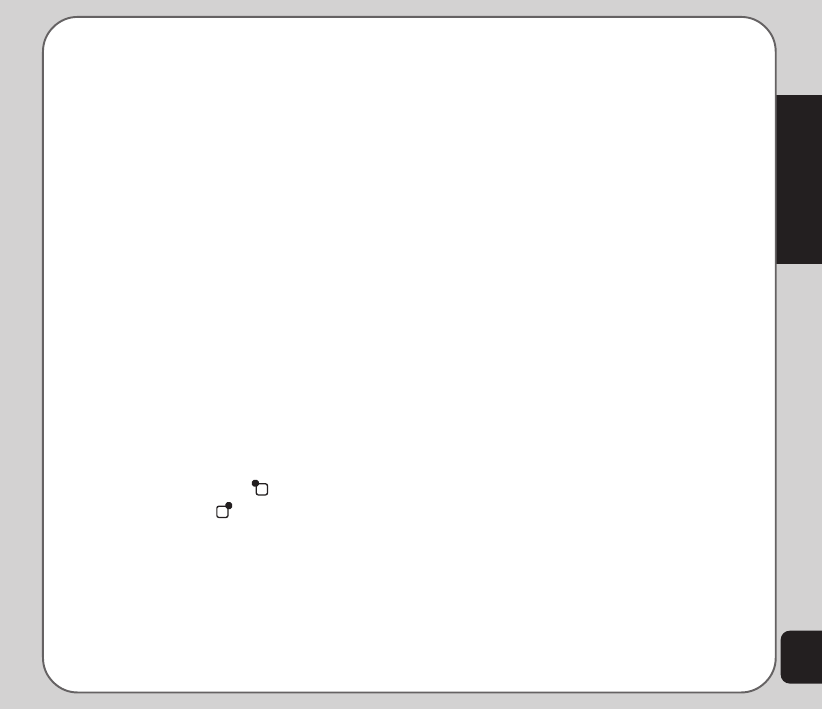
25
Phonebook
2. Enter a search term using the keypad. You
don’t need to type a whole word. For
instance, if you are looking for the entry
“office,” you may want to type simply “off.”
3. Press the Enter key.
4. Press the Enter key again to start the
search, or you can also change the text
input method and start the search again.
All entries that satisfy your search criteria
are displayed.
Copying and Moving
You can move contacts from your SIM card to
phone memory or from phone memory to SIM
card.
Follow these steps to move contacts:
1. From the main menu, select Phonebook
> Copy All.
2. Use the joystick to highlight From SIM to
copy contacts from the SIM card, or From
Phone to copy contacts from the phone.
3. Press the Enter key to select the option.
4. Press the left soft key to confirm, or
the right soft key to abort.
When all contacts are copied, a “Done”
message appears on-screen.
Deleting Contacts
You can delete individual contacts using the
Delete function. To delete individual contacts:
1. From the main menu, select Phonebook
> Delete.
The list of contacts in the phonebook
appears.
2 Select a contact to delete, then select
Delete.
3. A confirmation message appears, “Delete
it?” Select Yes to confirm.
You can delete all contacts from the handset or
SIM using the Delete All function. To delete all
contacts:
1. From the main menu, select Phonebook
> Delete All.
2. You are prompted to select a location.
Select From SIM to delete all contacts
stored on the SIM.
Select From Phone to delete all contacts
stored in the phone.
NOTE: When you attempt to delete all the contacts from the
SIM or phone, you are asked for a password. The default
password is 1234. See the “Security Settings” section in
chapter 6 for more information on passwords.
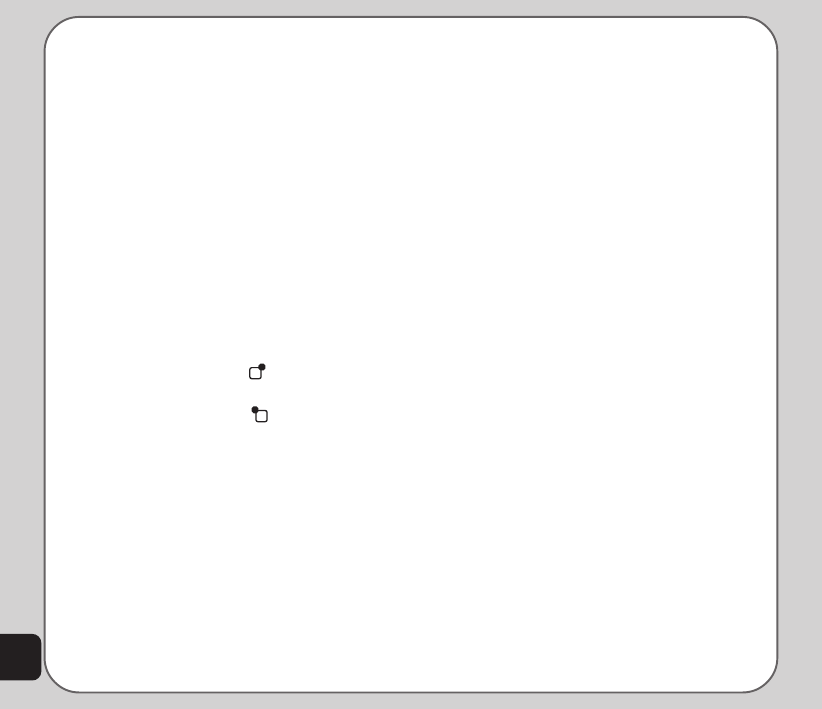
26
Caller Groups
You can separate contacts into groups to
identify them. There are five caller groups:
Friends, Family, VIP, Business, and Others.
You can change the name of any caller group.
You can add contacts from your phonebook to
a caller group and you can define ringtones,
pictures, etc.
To change the name of a caller group:
1. From the main menu, select Phonebook
> Caller Group.
2. Use the joystick to highlight a caller group,
then press the enter key.
3. Press the enter key to select the current
group name at the top of the list.
4. Use the keypad to enter a new name.
5. Use the right soft key to clear
characters.
6. Press the left soft key when the new
name is complete. Press it a second time
to confirm. You can also change the input
method here.
To change the alert:
1. Select the caller group to modify as
described in the previous procedure.
2. Use the joystick to select the alert option
(second in the list).
3. Use the right and left joystick option to
cycle through ring, vibration only, vibra
and ring, vibra then ring, or none.
This option determines what the phone
does when someone from the chosen
caller group calls the phone.
To change the ringtone:
1. Select the caller group to modify as
described in the previous procedures.
2. Use the joystick to select the ringtone
option (third in the list).
3. Use the right and left joystick option to
cycle through the available ringtones.
Each tone is played as it is displayed.
The chosen ringtone will sound when
someone from the current caller group
calls the phone.
To change the picture:
1. Select the caller group to modify as
described in the previous procedures.
2. Use the joystick to select the picture
option (fourth in the list).
3. Use the right and left joystick option to
cycle through the picture options.
This option determines which picture is
displayed when someone from the chosen
caller group calls the phone.
NOTE: If you select a picture from file, it must be smaller than
20K in size. You can read more about storing images in your
camera memory in the camera section, section 7.
To add or delete members from a caller group:
1. Select the caller group to modify as
described in the previous procedures.
2. Use the joystick to select the member list
option (last in the list).
3. Press the center joystick button to display
the member list.
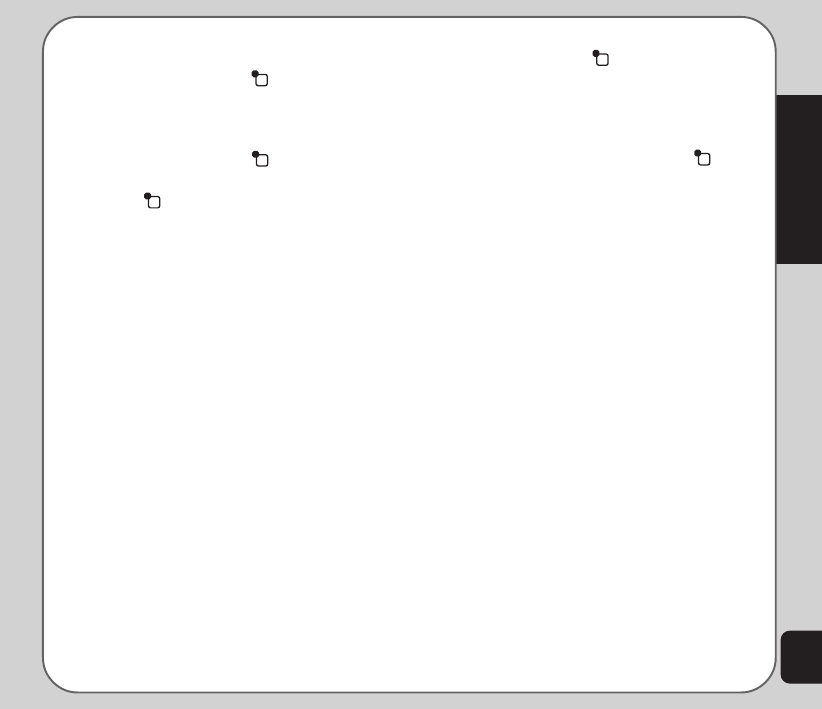
27
Phonebook
4. Use the joystick to highlight a member of
the list to modify.
5. Press the left soft key to enter the
options menu.
6. Use the joystick to highlight the Add or
Delete option.
7. Press the left soft key to confirm.
NOTE: If you selected the Delete option, you must press the
left function key again to confirm. If you selected the Add
option, you must highlight a new member from the displayed
list and press the Enter key to confirm.
Extra Number
The extra number setting is used to store
special numbers. You can store your own
number here, a service dial number, and an
SOS number.
NOTE: Some of these functions may not be supported by your
service provider. The service dial number and SOS number are
not configurable and are set by your service provider.
To add extra numbers:
1. From the main menu, select Phonebook
> Extra Number.
2. Select My Phone Number to store your
own number.
Select Service Number to store a service
number.
Select SOS Number to store an SOS
number.
3. Select an entry from the list, and a text-
entry screen appears. Enter the desired
number.
You can input both text and numbers. Use
the left soft key to select Option if you
need to change the input method.
When you have finished typing, press the
Enter key to confirm.
4. To edit or delete previous entries, select
an entry, then the left soft key to select
Option.
Phonebook Settings
The phonebook settings menu enables you to
view memory status, set the preferred storage
media, determine which fields appear in the
phonebook, edit and send a vCard, and turn on/
off the human voice prompt feature.
To view memory status:
1. From the main menu, select Phonebook
> Settings > Memory Status.
2. Select OK to display memory status.
To set the preferred storage:
1. From the main menu, select Phonebook
> Settings > Default Storage.
2. Highlight the preferred storage location
then select OK to confirm.
The phonebook fields include additional contact
information, such as Fax Number, E-Mail
Address, Incoming Ringtone, etc. You can
choose to deactivate these fields for all
contacts if this simplifies the phonebook for
you. You can later reactivate the fields if
desired.
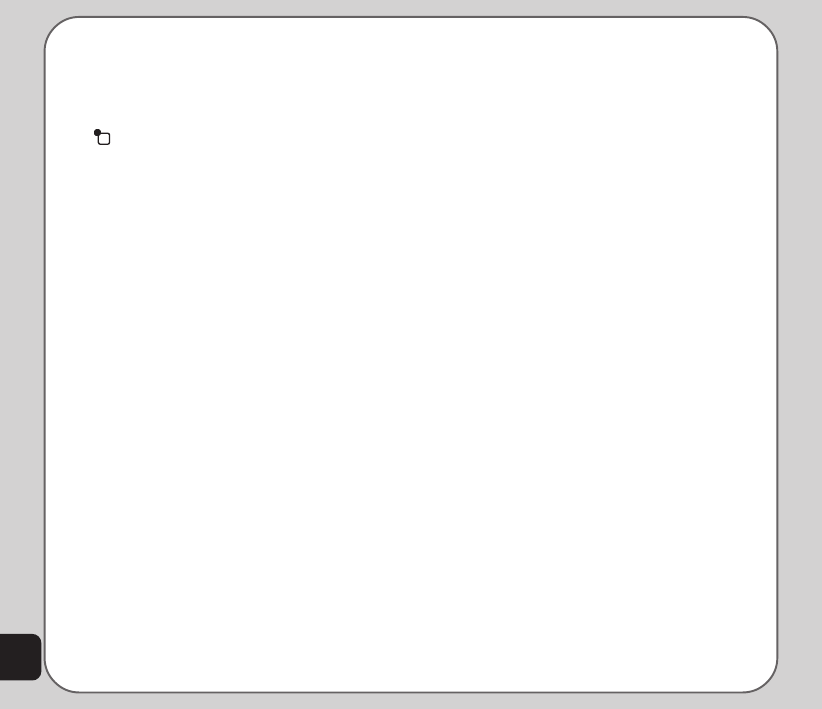
28
To edit the phonebook fields:
1. From the main menu, select Phonebook
> Settings > Fields.
A list of fields is displayed.
2. Highlight a field and press the left soft key
to deactivate or activate a field.
My vCard
A vCard is a virtual calling card that you can
send to people. It can contain your name,
number, home number, company name, e-mail
address, office number, and fax number.
To edit and send your vCard:
1. From the main menu, select Phonebook
> Settings > My vCard.
2. Select the Edit or Send to option.
The edit option enables you to fill in all the
fields. The send option enables you to
send by SMS, MMS, or save to a file. See
the next chapter for more information
about sending MMS and SMS messages.
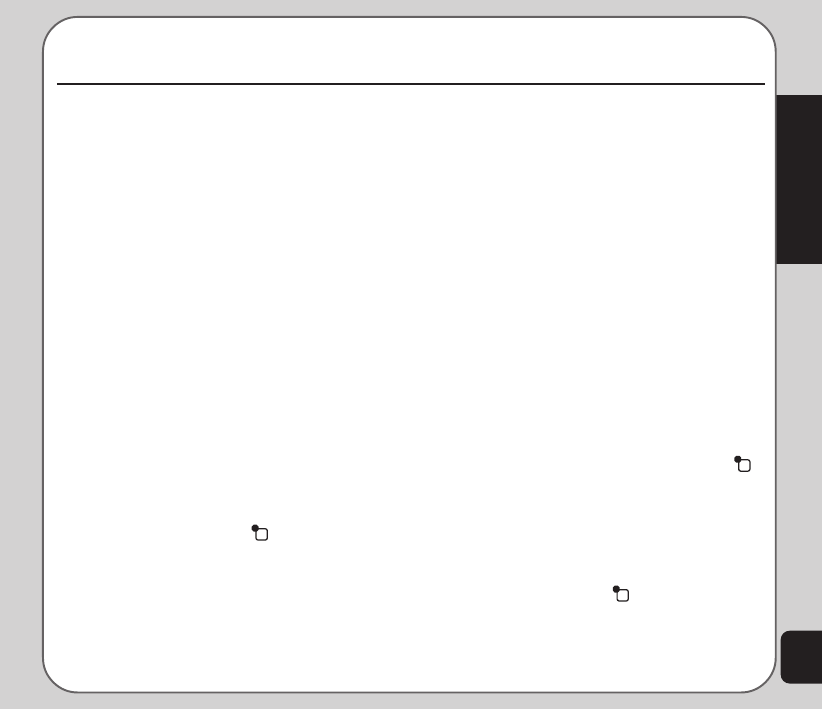
29
Messages
Messages
Read this section to learn how to use SMS, and
MMS messaging features of your new phone.
You can even send e-mail and use text chat.
This section also covers voice mail features,
broadcasting messages, and setting the
preferred text input.
SMS
An SMS message is a simple text message.
SMS messages can be sent and received with
your phone.
Composing an SMS Message
To compose an SMS message:
1. From the main menu, select Messages >
SMS > Write Message.
2. Enter your text message using the
alphanumeric keypad. See the section
“Text Entry,” in the Getting Started chapter
for more information about how to type
your message.
3. Press the left soft key to display the
Option menu.
The Option menu includes the following:
• Done
• Common Words
• Insert Object
• Text Format
• Input Method
A template is predefined section of text that you
can use in any SMS message. Inserted objects
can include a picture, an animation, or a sound.
Some phones may not be able to receive SMS
messages that contain a anything other than
text. Use the Format text option to adjust the
size and style of the text.
1. Highlight an option and select OK.
2. When your message is complete, select
the Done option.
The send options menu is displayed.
3. Use the joystick to select a send option:
• Send Only
• Save (in outbox) and Send
• Save (in outbox)
• Send to Many
• Send by Group
The send options require that you type in a
telephone number or press the left soft key
to search the phonebook.
The Send to Many option lets you send to up to
10 recipients.
The Send by Group option lets you send to an
entire group. Choose a group using the joystick
and press the left soft key to send.
The Save option saves a copy of the message
in the outbox which can be recovered later for
editing or sending.

30
Common Words
The common words feature contains common
text phrase that you can conveniently enter
without having to type the whole phrase. There
are 10 preset common words phrase which you
can use or edit.To add a common words phrase
to an SMS:
1. Begin an SMS message as described in
the section “Composing an SMS Mes-
sage” in this chapter.
2. Before typing any text, press the left soft
key to display the Option menu.
3. Use the joystick to highlight the Common
Word option and press the enter key to
confirm.
4. Use the joystick to highlight the common
words phrase you would like to add, then
press the enter key to confirm.
The text from the template appears in the
message. You can add to the text, or edit
the text before sending or saving the
message.
5. Send or save the message as normal.
To edit a common words phrase:
1. From the main screen, select Messages >
SMS > Common Words.
The common words list is displayed.
2. Use the joystick to highlight a common
words phrase to edit, then press the enter
key to confirm.
3. Use the joystick to highlight the Edit or
Delete option, then press the enter key to
confirm.
The Edit option displays existing common
words phrases and gives you the option to
change them. The Delete option deletes the
entry entirely.
Message Settings
The message settings menu enables you to
configure your SMS message settings. Up to
three profiles can be defined that contain,
message center number, valid period for each
message and message type. You can also
configure common settings which includes a
delivery report and reply path. You can also
view memory status, set the preferred storage
medium, and set the preferred bearer.
To configure common settings:
1. From the main menu, select Messages >
SMS > Settings > Common Settings.
2. Select Delivery Report or Reply Path
options then press the Enter key to
enable or disable the feature.
To check the memory status:
1. From the main menu, select Messages >
SMS > Settings > Memory Status.
2. Select OK to display the Memory Status.
To set the preferred storage option:
1. From the main menu, select Messages >
SMS > Settings > Default Outbox.
2. Select SIM or Handset.
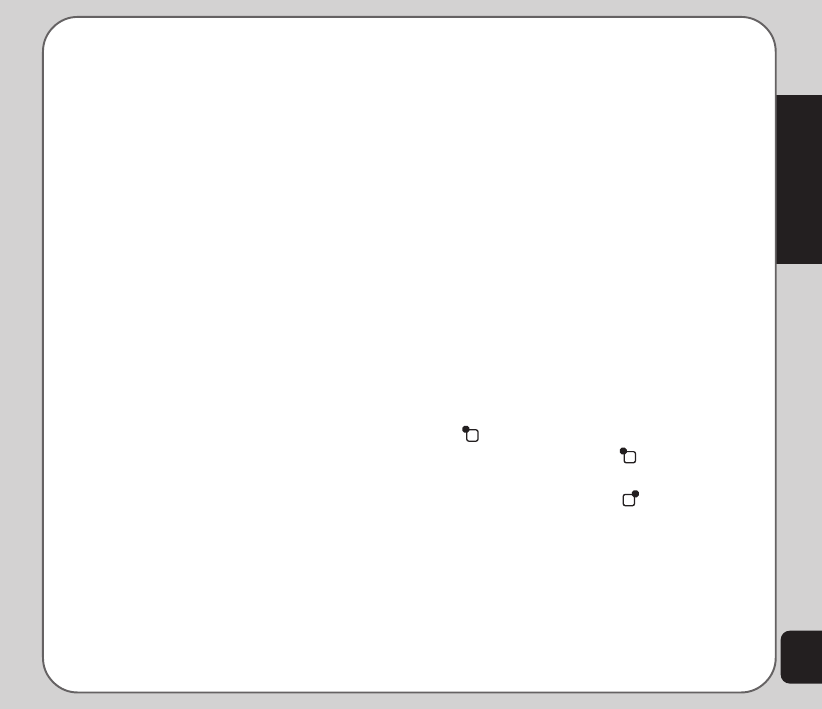
31
Messages
A small pop out box tells you the percent-
age of storage space already used in each
location.
The preferred bearer option sets the type of
network you prefer. When there is a choice of a
GSM or GPRS network, the phone then uses
the network of your preference.
To set the preferred bearer option:
1. From the main menu, select Messages >
SMS > Settings > Preferred Bearer.
2. Select the network option you prefer.
Select Pref GMS or Pref GPRS to set a
preference, or GPRS Only or GMS only if
you want to use only one kind of network.
Press the Enter key to confirm your
selection.
SMS Counter
There is an SMS counter which can keep a log
of the number of SMS messages sent and
received.
To view the SMS counter:
1. From the main menu, select Calls > SMS
Counter.
2. Use the joystick to highlight the Sent or
Received option.
The number of sent or received messages
is displayed.
MMS
MMS messages are like SMS messages but
they can also contain sounds and pictures.
Writing an MMS Message
Writing an MMS message is not very different
from creating an SMS message. MMS
messages are made up of slides. Each slide
contains a combination of text, images, or
audio.
To create an MMS message:
1. From the main menu, select Messages >
MMS > Edit MMS.
2. Select a To field then select to confirm.
3. Use the joystick to highlight the Add
Number or Add E-mail option then press
the enter key to confirm.
You can either add an e-mail address or
number manually, or press the left soft key
to access the phonebook.
4. Press the left soft key when you have
entered the recipient(s).
5. Press the right soft key to return to the
recipient list. Press again to return to the
main menu.
6. Use the joystick to highlight and select Cc,
and Bcc recipients. Enter recipients in
these fields in the same way as the To
field.
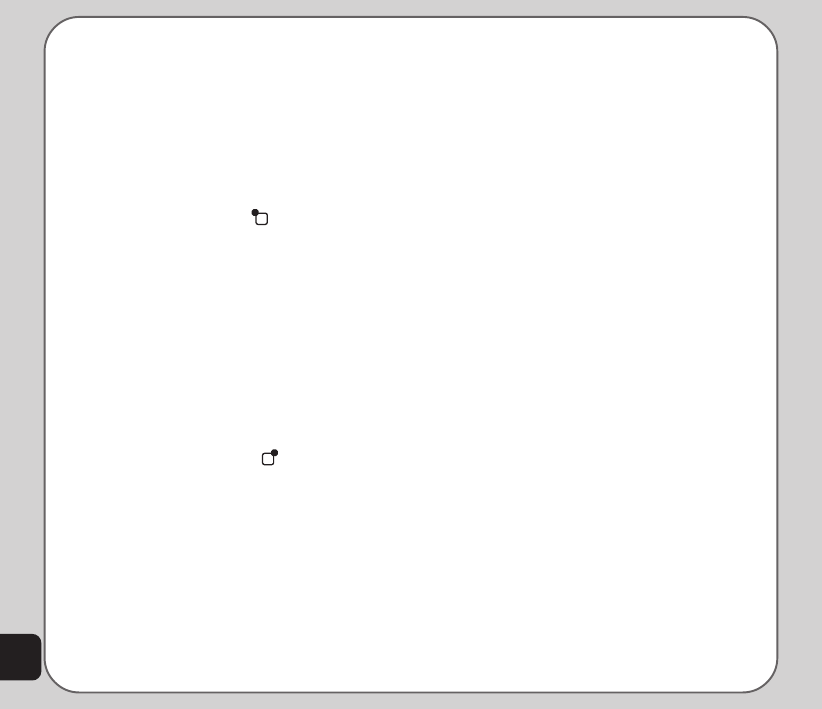
32
7. Use the joystick to highlight the Subject
field then press the enter key to confirm.
8. Use the keypad to enter a subject.
To create a slide:
1. To create a slide, use the joystick to
highlight the Edit Content field then press
the enter key to confirm.
You can enter text in the same way as you
would for an SMS message.
2. Press the left soft key to display the
Option menu.
3. Use the joystick to highlight an option and
press the center joystick button to confirm.
You can add an image, add audio, attach
a file, or change the input method.
4. When your message is complete, highlight
the Done option with the joystick, then
press the enter key to confirm.
You have just created one slide. Repeat
the process to add more slides.
To send the MMS message:
1. Press the right soft key to display the
Send menu.
2. Use the joystick to highlight a Send option,
then press the enter key to confirm.
Viewing an MMS Message
Some MMS messages are longer than the
screen. To move up or down a page, press and
hold the up or down joystick key.
Using Templates
There are templates stored on your phone
which contain text, images, and sound. You can
create MMS messages based on templates
stored on your phone. You can also edit any of
the existing templates.
To use a template:
1. From the main menu, select Messages >
MMS > Templates.
A list of available templates appears.
2. Highlight a template, then select Options.
Select View to preview the template.
Select Properties to view fields and the
size of the template.
Select Write Message to send the
message.
3. Edit the To, Cc, Bcc, and Subject fields
as described in the previous procedure.
4. Edit the content if required as described in
the previous procedure.
5. Send the completed message as
described in the previous procedure.
Message Settings
MMS message settings can be used to set
validity period, delivery report, read report,
priority, slide timing, and delivery time.
To configure message settings:
1. From the main menu, select Messages >
MMS > Message Settings.
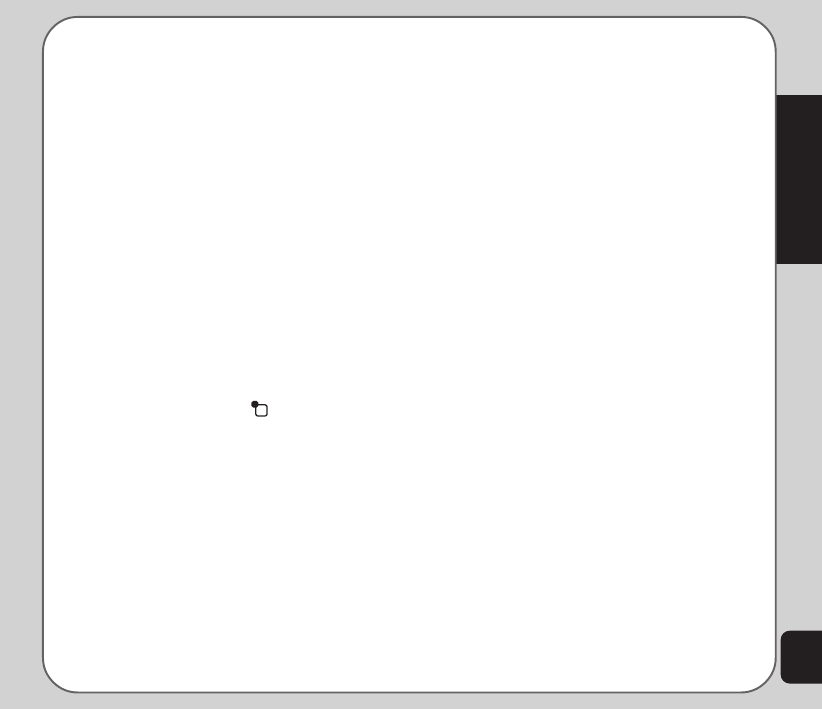
33
Messages
2. You can change any setting by highlight-
ing it with the joystick and then using the
joystick (left and right) to scroll through the
options for each setting.
Chat
You can use your phone to chat with other cell
phone users.
To use the chat function:
1. From the main menu, select Messages >
Chat.
2. Use the joystick to highlight a chatroom
from the list, the press the enter key to
confirm.
3. Press the enter key to display the
chatroom information.
4. Enter a nickname and destination number
if required.
5. Press the left soft key to save your new
settings.
6. Use the joystick key to select the Start
New option, then press the Enter key to
confirm.
The chat session begins.
E-mail
You can use the phone to send e-mail
messages. Before you can use the e-mail
feature you must set up an account. Settings
such as incoming and outgoing servers are
entered in e-mail profiles. Contact your service
provider for details about e-mail settings.
To set up an e-mail account:
1. From the main menu, select Messages >
Email > Email Profile.
A list of e-mail profiles is displayed.
2. Use the joystick to highlight a profile to
use, then press the enter key to confirm.
3. Use the joystick button to highlight the
Edit option, then press the enter key to
confirm.
The profile menu is displayed. Here you
can configure profile settings, the outgoing
server, the incoming server and your
signature.
4. Use the joystick to highlight the Profile
Setting option, then press the enter key to
confirm.
The Profile Setting menu is displayed.
5. Use the joystick to highlight each field and
press the enter key to change any field.
Once your e-mail profile is complete, you need
to activate it.
1. From the main menu, select Messages >
Email > Email Profile.
A list of profiles is displayed.
2. Use the joystick to highlight a profile to
use, then press the enter key to confirm.
3. Press the enter key to activate the
selected profile.
Once your profile is activated, you can send
and receive e-mail with your phone.

34
Voice Mail
You can set up two voice mail accounts on your
phone that will take messages for you when
you are not able to answer your phone.
To set up a voice mail server:
1. From the main menu, select Messages >
MMS > Voice Mail.
A list of voice mail accounts is displayed.
2. Use the joystick to highlight a voicemail
accounts, then press the enter key to
confirm.
3. Press the enter key to edit the voice mail
details.
4. Type in the voice mail number.
You can also erase voice mail details or
connect to a voice mail account here.
Note: Voice mail is a service provider feature. Contact your
service provider for voice mail numbers and settings or other
voice mail assistance.
Broadcast Message
Use the Broadcast Message option to set
broadcast message parameters.
To set broadcast message parameters:
1. From the main menu, select Messages >
MMS > Broadcast Message.
2. Use the joystick to highlight the Receive
Mode option, then press the enter key to
toggle the setting on or off.
3. Select the Read Messages option then
press the enter key to read stored
broadcast messages.
4. Use the joystick to highlight the Language
option then press the enter key to display
the language menu.
Use the joystick to check the language
options that you want to receive.
5. Use the joystick to highlight the Channel
Setting option then press the enter key to
confirm.
6. Use the joystick to select, add, edit, or
delete channels.
Preferred Input
The preferred input setting lets you define the
default input method when writing messages.
To set the preferred input method:
1. From the main menu, select Messages >
Preferred Input.
2. Use the joystick to highlight an input
method, then press the enter key to
confirm.
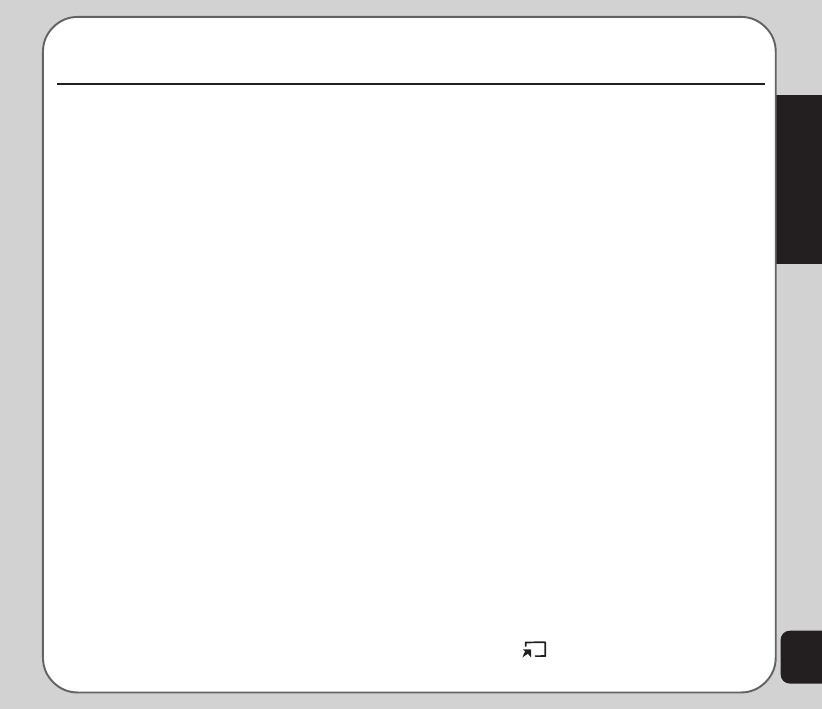
35
Settings
Settings
Manner
The phone can be set to behave in a number
of manners. Each manner is designed to be
used in a particular environment. For instance,
if you are in a meeting you may want your
phone to alert you silently when a call comes
in.
To select a manner:
1. From the main menu, select Manner.
A list of manners appears.
2. Highlight a manner from the list, then
press the enter key to confirm.
3. Press the enter key a second time to
activate the selected manner.
Manner Settings
Each manner can be personalized to suit your
own needs.
To personalize a manner:
1. From the main menu, select Manner >
Personalize.
A list of customizable features is
displayed, including ring tone, volume,
answer mode, and more.
2. Select a feature to customize from the list
and press the enter key to confirm.
The feature submenu is displayed.
For example, for Ring Mode, you can
select Ring Only, Vibrate, Vibrate and
Ring, or Vibrate, then Ring.
3. Highlight a feature to change from the
submenu and press the enter key to
confirm the changes.
Phone Settings
The Phone menu enables you to configure
handset features including time and date,
scheduling power on and off, language,
preferred input method, default encoding type,
display characteristic, contrast, greeting text,
speed dial, dedicated keys, and automatic
update of date and time.
To access the phone setup menu:
From the main menu, select Settings >
Phone.
A list of phone settings is displayed.
Shortcuts
You can create a set of ten shortcuts that
access specific features directly.
To access the list of shortcuts:
1. The down joystick key has a shortcut
symbol: . Press this key to display the
list of shortcuts.
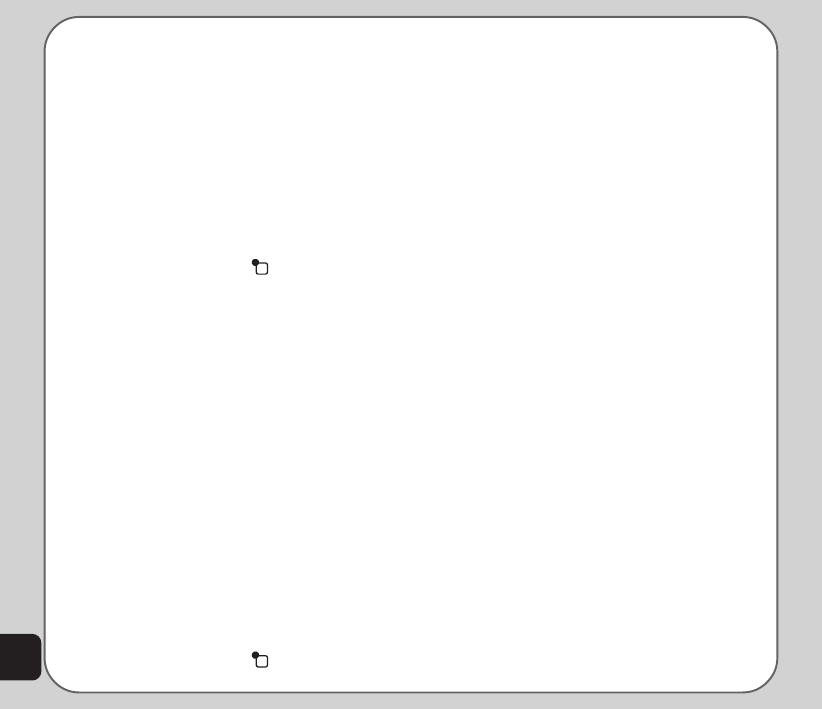
36
2. Highlight a shortcut, then press the enter
key to confirm.
The shortcut is then executed.
You can customize your list of shortcuts.
To edit the shortcut list:
1. From the main menu, select Settings >
Shortcuts.
A list of current shortcuts is displayed.
2. Use the joystick to highlight a number in
the shortcut list. You can replace this
number with a different menu item.
3. Press the left soft key to select
Settings. the selection.
A list of available menu items is displayed.
4. Highlight an item from the list using the
joystick and press the enter key to
confirm.
The new item replaces the previous item
on the shortcut list.
Themes
Themes are color schemes that can be set on
your phone. The theme can also be set to
change hourly, daily, weekly, monthly, or
seasonally.
To set a theme:
1. From the main menu, press Settings >
Themes.
A list of themes is displayed.
2. Use the joystick to highlight a theme.
3. Press the left soft key to select Option.
4. Use the joystick to highlight an option and
press the enter key to confirm.
The Activate option activates the selected
theme. The Theme Timer option defines
how often the theme is updated. The Set
Order option defines the order in which the
themes are updated.
Phone
Time and date
The Settings > Phone > Time/Date option
enables you not only to set the time, but also
enables you to set a time zone by selecting
your location and set a format for displaying
dates.
Handset Timer
The phone can be set to turn on or off
automatically. The Settings > Phone >
Handset Timer option enables you to schedule
times to turn power on or off.
Up to four power on / off times can be defined.
Highlight a number from the list using the
joystick and press the enter key.
Use the right and left joystick keys to change
settings for each field.
The Status field sets the status of the phone to
On or Off at the time of the scheduled power

37
Settings
on/off. The Power field sets whether the phone
is to turn On or Off. The Time field sets the time
for the power to turn on or off.
In the submenu, use the joystick to move
between fields and the center joystick button to
change a setting.
Define the status, enabled or disabled. Define
the event, on or off, and define the time,
Language
The Settings > Phone > Language option
enables you to set the default language used in
menus. Select from English, Simplified
Chinese, or Traditional Chinese.
Preferred Input Method
The Settings > Phone > Preferred Input
enables you to set the default input method for
entering numbers, or roman alphabet or
Chinese characters.
The “Text Entry” section of the Getting Started
chapter for details on inputting text.
Default Encoding Type
The Settings > Phone > Default Encoding
Type option sets default encoding for Chinese
characters. Select from BIG5 or GB2312.
Display Settings
The Settings > Phone > Display Settings
option enables you to change wallpaper image,
screen saver image, date and time display,
manner, and showing your own number.
Greeting Text
The Settings > Phone > Greeting Text option
sets a short phrase that appears each time the
phone is turned on.
Greeting text can be entered and edited. Set
the status to On if you want the text to appear,
or to Off if you do not want it to appear.
Speed Dial
The Settings > Phone > Speed Dial option
assigns single keys to numbers in your phone
book so that you can quickly and conveniently
dial those numbers.
Number keys 2~9 can be assigned one speed
dial number each. Pressing and holding a key
with an assigned speed dial number calls that
number.
Before using the speed dial function, the
Enable Speed Dial item must be set to On.
Arrow Key Settings
The joystick keys also act as shortcut keys.
When the phone is showing the standby
screen, pressing a joystick key displays a menu
item.
By default, joystick keys are assigned the
following functions:

38
Up: Inbox
Down: Shortcut
Left: Camera
Right: Media Center
With the Settings > Phone > Arrow Key
Settings option, each of the joystick keys–up,
down, left, and right–can be assigned the
function of your choice.
To reassign a shortcut key function:
1. From the Arrow Key submenu select a key
to edit, then select Edit.
2. A list of available menu items appears.
3. Select a menu item, then press the enter
key.
4. The selected menu item is now assigned
to the joystick key.
Auto Update of Date and Time
Auto update of date and time is a network
service that automatically updates the date and
time in your phone when you travel or if daylight
savings time is used in your area.
You can enable Settings > Phone > Auto
update of date and time option to take
advantage of this service, if offered by your
service provider.
To enable this option, highlight the Auto update
of date and time option and toggle between On
and Off using the right and left joystick keys.
Call Settings
The Call menu contains call features that
control or restrict the calls you make or receive.
There are also features to show or hide your
number when making calls, control the time of
calls, conveniently redial numbers, or select a
line.
Call menu features include Hide My No., Call
Waiting, Call Forwarding, Call Barring, Line
Switching, Call Time Reminder, Call Time
Display, Auto Redial, Closed User Groups, and
Call Filter.
Hide My Number
The Settings > Call > Hide My No. option
enables you to withhold your number, so that
when you call someone, your number is not
shown.
You can choose to activate or deactivate this
option, or let the network set the option.
Call Waiting
If your service provider offers call waiting, you
first need to enable the Settings > Call Setup
> Call Waiting option.
To enable call waiting:
1. Highlight the Call Waiting option from the
Call Setup menu and press the center
joystick button to confirm.
2. You can choose to Activate, Deactivate, or
Query the current setting.
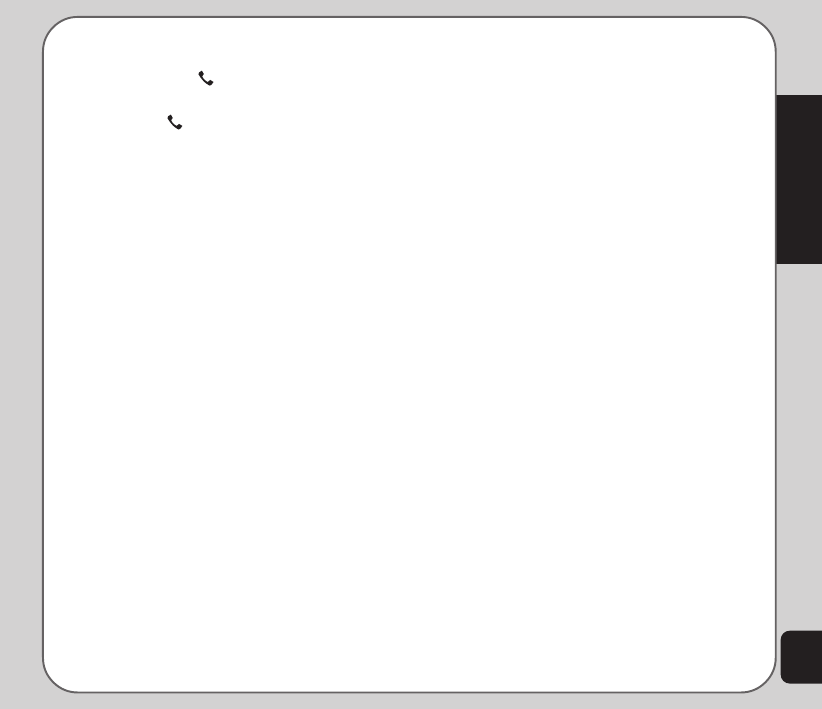
39
Settings
To use the call waiting feature:
1. When you receive a call during another
call, press the Call key to receive the
second call.
2. Press the Call key to switch back to
the first call or to switch between calls.
Highlight the Call Waiting option from the Call
Setup menu and press the center joystick
button to confirm.
You can choose to activate, deactivate, or
query the current setting.
Call Forwarding
The Settings > Call > Call Forwarding option
can be accessed from the Call menu. With call
forwarding, you can direct calls directly to your
voice message box when you are busy and
cannot take calls.
You can choose to forward all voice calls, or
forward if unreachable, if calls are not an-
swered, if busy, or divert all data calls.
Select Cancel to deactivate call forwarding.
Call Barring
Call barring is a service available through your
service provider. This service restricts different
types of incoming and outgoing calls. The
Settings > Call > Call Barring option enables
you to bar outgoing calls, incoming calls, cancel
all bars, or change the barring password.
Options for Outgoing Calls: All Calls,
International Calls, International Except Home
Options for Incoming Calls: All Calls, When
Roaming
NOTE: A call barring password is required to make changes to
call barring settings. See your service provider if you don’t
know your password.
Line Switching
Depending on your service provider and SIM
card, you may have more than one line
available for use. Although the network
automatically assigns a line to you, you may
also use the Settings > Call > Line Switching
option select a line to use. This option can be
used when line quality differs or when you have
difficulty placing a call because of busy lines.
To use line switching, select the line switching
option, then press the enter key to toggle
among available lines.
Call Time Reminder
If you want to limit the length of your calls, use
the Settings > Call > Call Time Reminder
option. After the time limit specified, your phone
sounds a reminder for you.
To set a call time reminder:
1. Select Single if you want to use a
reminder for just one call. Select Periodic
if you would like a reminder for all your
calls, then press the enter key.

40
2. A time field appears. Fill in the number of
seconds after which a reminder should
sound, then select OK.
You can choose to turn the function off, turn it
on for a single call, or turn it on periodically.
Call Time Display
If you would like to monitor or keep track of the
length of your calls, use the Settings > Call >
Call Time Display option. When enabled, the
screen displays the time length of your calls.
To enable call time display, select the Call Time
Display option, then press the enter key to
toggle the function On and Off.
NOTE: Select Calls > Call Time to see records of call times.
For more information about call times and costs, refer to the
section “Call Time/Cost” in the Call chapter of this manual.
Auto Redial
When the Settings > Call > Auto Redial option
is enabled, you can redial the number of the
last call made or received by simply pressing
the call key.
To activate the Auto Redial option, select it,
then press the enter key to toggle the function
On or Off.
Closed User Group
A closed user group is a service provided by
some service providers that permits network
access by members of the group only. The
Settings > Call > Closed User Group option
enables you to add closed user groups, edit
existing ones, and activate or deactivate them..
To add a closed user group:
1. Highlight the Closed User Group option,
then press enter.
2. A group list appears. Select an Empty slot,
then select Add.
3. A text entry screen appears. Enter the
telephone numbers of group members.
You can also input text if desired.
Call Filter
The Settings > Call > Call Filter option
enables you to set up call filters. Call filters
block the numbers or types of numbers you
specify from reaching your phone.
To block numbers, select Ignore List. Use the
right and left joystick keys to select Accept
Unknown Call or Reject Unknown Call. You
can enter specific numbers to block by
selecting and entry line and pressing the Enter
key.
To enter numbers that you do not want the
phone to block, select Privileged List.

41
Settings
Call filters can be turned on and off. Select
Filter Settings, then press the Enter key. To
turn filters off, select Off then press the Enter
key. To turn filters on, select Ignore List, then
press the Enter key. To turn filters on, you must
have previously set one or more numbers to
block in the Ignore List.
Network Settings
The default network settings in the phone are
for automatic detection of the best available
lines for the type of content you are sending.
Your phone also offers the flexibility to let you
manually select various network options to suit
your preferences
Network menu features include Network
Selection, Preferred Network, Band Selection,
and GPRS Connection.
Network Selection
With the Network > Network Selection option,
you can select available networks from various
service providers, set bandwith for GMS
networks, and set usage for GPRS networks.
Preferred Network
To select a preferred network:
1. Highlight the Preferred Network option,
then press the enter key.
2. There are two options: Automatic (default),
or Manual.
If you select Manual, a list of available
networks appears.
3. Highlight the desired network, then select
OK.
NOTE: There may be only one network listed, depending on
your geographic location. Higher fees may also result from
using a network other than that of your service provider.
Band Selection
Depending on your geographic location, one or
more bandwidths are available on a GMS
network. In the Network > Band Selection
option, you can set bandwith preferences.
Select from 900, 1800, 1900, or Dual Band.
GPRS Connection
Some users may prefer to use GPRS network
for faster data transmission and support of
multimedia files, such as delivery of polyphonic
ring tones, color graphics, games, and
software.
If a GPRS network is available, you can set
your usage preference with the GPRS option
can set through the the Network >GPRS
option.
Highlight the GPRS option and press the enter
key to toggle between Always and When
Needed.

42
Security Settings
The Security menu contains features to prevent
information from being accessed or calls being
charged to your account. There are password
features to protect both your phone and your
SIM card in case of loss, theft, or unauthorized
use. You can also control the numbers dialed
from the phone with Barred Dial.
Security features include SIM Lock, Auto
Keypad Lock, Fixed Dial, Barred Dial, and
Change Password.
SIM Lock
Using the Security > SIM Lock option protects
the SIM card from unauthorized use if the
phone is stolen or used by others.
Highlight the SIM Lock option from the Security
Setup menu and press the right and left joystick
keys to toggle the option On or Off.
NOTE: This option requires a default password from your
service provider. Consult your service provider if needed.
Phone Lock Code
The Security > Phone Lock Code option
provides additional security by locking the
handset. Even if the SIM card is changed, the
phone cannot be used until a password is
entered to unlock it.
NOTE: The default password is 1234. See the
section”Change Password” in this chapter for
information on setting your own password.
Highlight the SIM Lock option from the Security
Setup menu and press the right and left
joystick keys to toggle the option On or Off.
Auto Keypad Lock
The Security > Auto Keypad Lock option
locks the keypad after a specified period of
time.
To set the auto keypad lock:
1. Highlight the Auto Keypad Lock option,
then press the enter key.
2. Select to lock the keypad after 5 seconds,
30 seconds, 1 minute, or 5 minutes of
inactivity. Select None to disable the
function.
For information on unlocking the keypad, see
the section “Unlocking the Keypad” in the
Getting Started chapter of this manual.
Fixed Dialing
The Security > Fixed Dial function limits
dialing to the numbers that you specify. Fixed
dialing is a service offered by some service
providers.
The Fixed Dial option can be turned On or Off
and a fixed dial list can be defined.
NOTE: This option requires a password, known as PIN2.

43
Settings
Consult your service provider if you don’t know the password.
Barred Dialing
The Security > Barred Dial option enables you
to block dialing of certain numbers. Barred
dialing is a service offered by some service
providers.
To enable the option, highlight the Barred Dial
option from the Security Setup menu and press
the enter key to toggle the option on and off.
NOTE: This option requires a password. Consult your service
provider if you don’t know your password. This function may not
be supported by all service providers.
Change Password
Use the Security > Change Password option
to change passwords for SIM card PINs or for
the phone.
To change a password:
1. Highlight the Change Password option
and press the enter key
2. Select the password you wish to change:
PIN, PIN2, or Phonelock.
3. You are prompted to enter the old
password, then enter the new password.
NOTE: The default phonelock password is 1234. Consult your
service provider if you have forgotten a PIN password or need
further assistance with PIN passwords.
Factory Settings
The Settings > Factory Settings option
restores all settings to factory default, just as
they were when you purchased the phone.
To restore factory default settings:Highlight the
Restore Factory Default option from the
Security Setup menu and press the enter key.
All factory default settings are then restored.
NOTE: This option requires a password. Use the default
password, 1234, to access this setting.
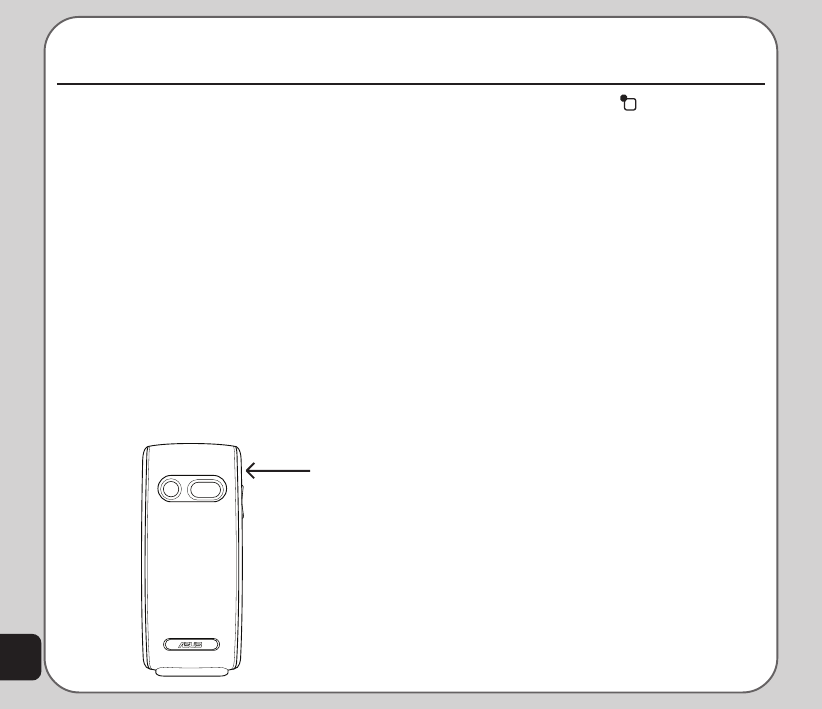
44
Camera
The phone is equipped with a high quality
camera for capturing still pictures and video.
Taking Photos
Follow these steps to capture still pictures with
your phone.
1. Press the menu button on the keypad to
display the main menu screen.
2. Use the joystick to highlight the Camera
icon and press the enter key to confirm.
3. Highlight the Capture option, then press
the enter key to enter capture mode.
4. Point the camera lens at the subject and
use the LCD screen to frame your picture.
5. Press the enter key or the capture button
on the side of the camera to capture the
image.
Capture
button
6. Press the left soft key to save the
image in your album.
Zoom Function
The phone has an easy-to-use zoom function.
To zoom in on an object, press the up joystick
key.
To zoom out, press the down joystick key.
You can preview the zoom effect on the
phone’s screen. In addition, a slide bar on the
right of the screen moves as zoom is applied.
Viewing and Managing
Photos
Use the My Album option to view and manage
the still images in your album.
To open My Album:
1. While in capture mode, select Option >
My Album, or
From the main menu, select Camera > My
Album.
A list of stored images is displayed.
2. To view an enlarged thumbnail, highlight
an image and press the enter key. You
can browse photos in this enlarged view
using the up and down joystick keys.
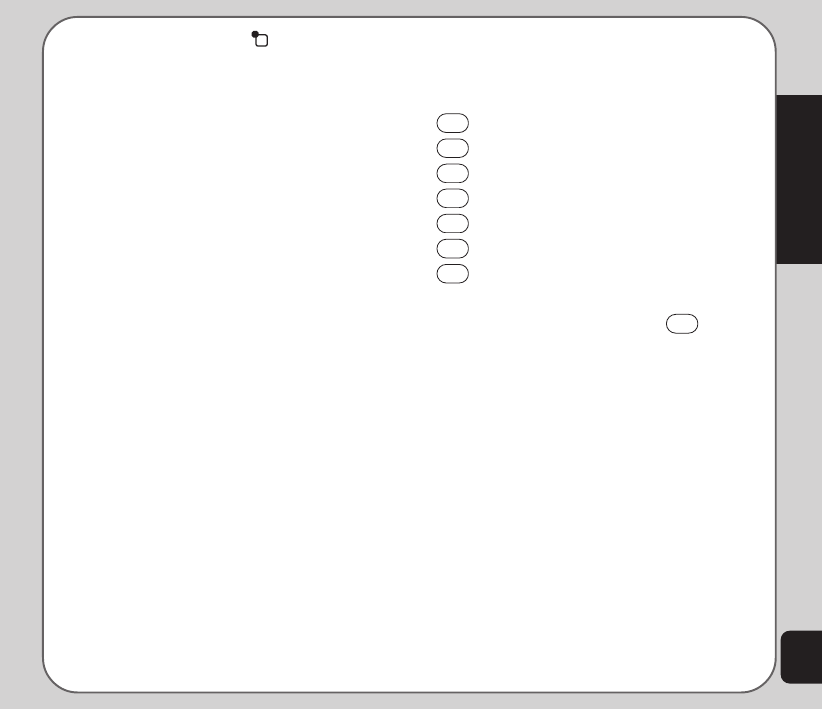
45
Camera
3. Press the left soft key to display the
Option menu. You can view, send,
rename, delete, and sort photos. You can
also set the default storage to handset or
memory card.
Photo Capture Settings
The camera can be configured to capture
images of different size and quality. You can
also capture photos with frames or special
effects, take multi-capture photos, use a timer,
or set the default storage location to handset
or memory card.
To access photo capture settings:
Put the camera into capture mode, as
described in the “Taking Photos” section of this
manual, then select Option.
Camera Settings
Use the camera settings option to set the white
balance, shutter sound, EV, night mode, and
AC frequency.
To access the Camera Setting menu:
1. While in capture mode, select Option >
Camera Settings.
2. Highlight an option to adjust using the
joystick.
3. Adjust the values of settings using the
joystick left and right keys.
Camera Settings Shortcuts
The number keys also act as shortcut keys for
the camera settings. The keys are assigned as
follows:
1
Effect
2
White Balance
3
Capture Timer
4
Multi-Capture
5
Night Mode
6
Image Quality
7
Image Size
Press the key repeatedly to change a given
setting. For example, if you press
4
for
Multi-Capture, pressing again enables you to
apply 1 Shot, 3 Shot or 5 Shot to the setting.
Image Settings
Use the image setting option to set the image
size and quality.
To access the Image Setting menu:
1. While in capture mode, select Option >
Image Settings.
2. Highlight an option to adjust using the
joystick.
3. Adjust the values of settings using the
joystick left/right action.

46
Effect
Use the Effect option to apply photo effects as
you capture photos. For example, you can
capture photos with a photo negative effect,
alter colors, or make the photo look like a
sketched drawing.
To apply photo effects:
1. While in capture mode, select Option >
Effect.
A list of photo effects appears.
2. Highlight an effect from the list using the
joystick and press the enter key to apply
the setting.
Add Frame
Use the Add Frame option to add frames to
pictures you capture.
To apply frames to photos:
1. While in capture mode, select Option >
Frame.
2. Highlight a frame from the list.
You can use the up and down joystick
keys to scroll through the other frames to
view them all.
3. To select a frame, press the enter key. The
selected frame is then displayed on the
capture screen.
4. To remove a frame, select Option >
Frame > No Frame.
Multi-Capture
The Multi-Capture enables multiple capture
shots, so the camera captures three or five
shots with a single click of the button.
To enable the multi-capture function:
1. While in capture mode, select Option >
Multi-Capture.
2. Select a number of shots. Select
Deactivate or 1 Shot for standard single
shots, or 3 Shot 5 Shot for multi-capture
shots.
Capture Timer
Use the delay timer to add a delay time
between pressing the capture button and the
picture actually being captured. This can allow
enough time to take pictures of yourself.
To set the capture timer:
1. While in capture mode, select Option >
Capture Timer.
2. Select 5 sec, 10 sec, or 15 sec, or
Deactivate to turn the function off.
Default Storage
Use the default storage option to set where
captured pictures are stored. You can store
captured pictures either in the handset
(internal) memory, or on a mini SD card if
installed.
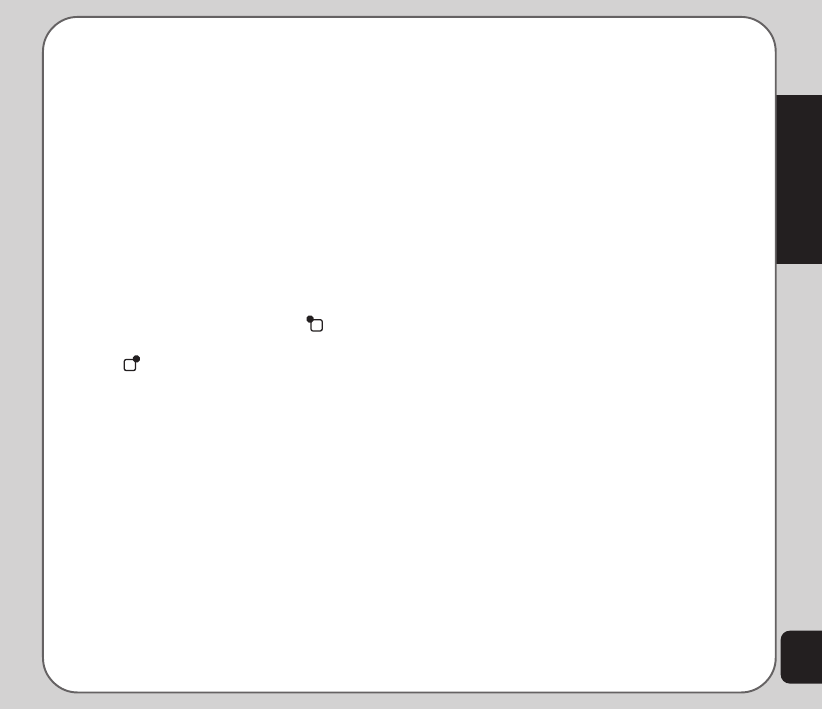
47
Camera
To set the storage option:
1. While in capture mode, select Option >
Default Storage.
2. Highlight Handset or Memory Card, then
press the enter key to confirm.
Restore Default
Use the Restore Default option to restore all
factory default camera settings.
To restore default settings:
1. While in capture mode, select Option >
Restore Default.
2. A message asking you to confirm the
action is displayed.
3. Select Yes with the left soft key to restore
defaults, or select No with the right soft
key to abort.
Recording Videos
Follow these instructions for shooting video:
1. From the main menu screen, highlight the
Camera icon, then press the enter key.
2. Select the Video Recorder option, then
press the enter key to enter capture mode.
3. Point the camera lens at the subject and
use the LCD screen to frame your video.
4. Press the enter key or the capture button
to begin recording. Press the enter key or
the capture button again to stop recording.
Zoom Function
The phone’s video recorder also has a zoom
function.
To zoom in on an object, press the up joystick
key.
To zoom out, press the down joystick key.
You can preview the zoom effect on the
phone’s screen. A slide bar at the bottom of the
screen moves as zoom is applied.
Viewing and Managing
Videos
Select the My Video option to view and play the
videos in your album.
To open My Video:
1. While in video capture mode, select
Option > My Video, or
From the main menu, select Camera > My
Video.
A list of stored videos is displayed.
2. Use the joystick to highlight a video and
press the enter key to play.
To pause, press the enter key. Press the
enter key again or select Resume to
resume.
3. To edit files, select Option. You can view,
forward, rename, or delete files. You can
also sort image files or set the default
storage location.

48
Some video playing features are explained in
the following sections.
Full-Screen Mode
While the video is playing, a progress bar and
the time elapsed is shown at the bottom of the
screen. If you wish to view the video in full-
screen mode, press the * key to toggle in and
out of full-screen mode.
Rewind and Fast Forward
To rewind, press and hold the left joystick key.
To fast forward, press and hold the right joystick
key.
Video Playback Speed
You can select from five different video
playback speeds: ×1/2, ×1, ×2, ×4, and ×8.
To select a playback speed, press the up and
down joystick key. Use the up key to iselect a
higher speed and the down key to select a
lower speed.
The current speed is shown in the lower left of
the screen.
Volume
To adjust volume, press the side volume key.
Press + to increase volume, and - to decrease
volume.
Capturing a Still Photo
You can capture a still photo from a video by
pressing the capture button on the side of the
camera while the video is playing.
Video Capture Settings
The camera can be configured to capture
videos of different size and quality. You can
also capture videos with special effects, or set
the default storage location to handset or
memory card.
To access video capture settings:
Put the camera into video recorder capture
mode, as described in the “Recording Videos”
section of this manual, then select Option.
Camcorder Settings
The Camcorder Settings includes options
related to lighting conditions. There are settings
for white balance, EV, Night mode, and AC
frequency.
To open the Camcorder Settings menu:
1. While in video recorder capture mode,
select Option > Camcorder Settings.
2. Highlight an option to adjust.
3. Adjust the value of a setting using the
joystick left and right keys.
NOTES: EV stands for exposure value. The EV option enables
you to manually raise or lower the exposure value.
The AC Frequency option adjusts for lighting flicker. Select the
frequency of electrical current in your area.
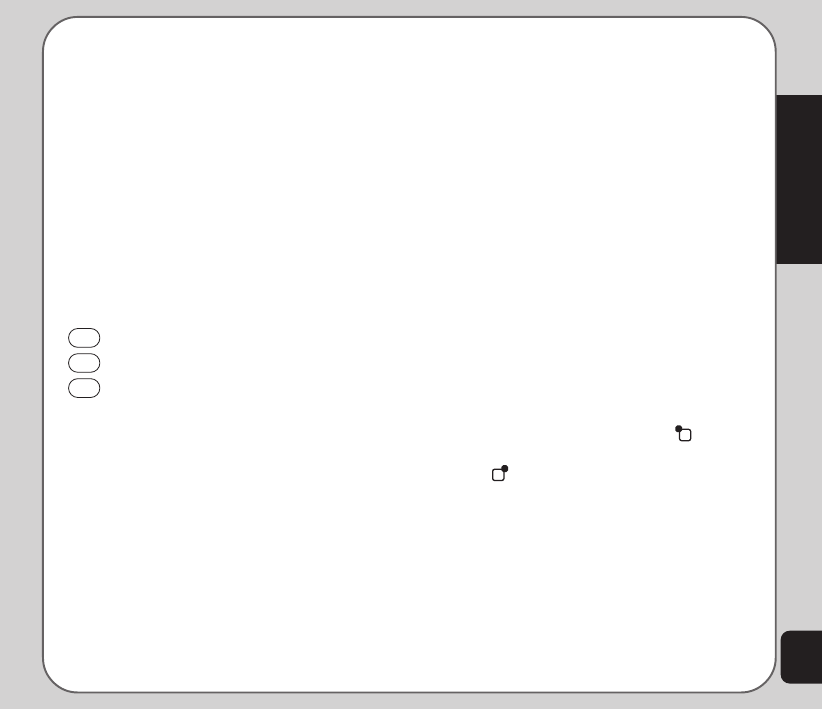
49
Camera
Video Settings
Use the Video Settings option to set the video
quality, file size limit, record time limit, turn the
audio on and off, and set the encode format.
To open the video setting menu:
1. While in video recorder capture mode,
select Option > Video Settings.
2. Highlight a setting to adjust.
3. Adjust the value of a setting using the
joystick left and right keys.
Video Settings Shortcuts
The number keys also act as shortcut keys to
the video settings. The keys are assigned as
follows:
1
Effect
2
White Balance
3
Night Mode
Effect
Use the Effect option to apply a photo effect,
such as a photo negative effect or a color
effect, when you shoot a video.
1. While in video recorder capture mode,
select Option > Effect.
A list of effects appears.
2. Highlight an effect from the list using the
joystick and press the enter key to apply
the setting.
Default Storage
Use the default storage option to set where
captured videos are stored. You can store
captured videos either in the handset (internal)
memory, or on a mini SD card if installed.
To set the storage option:
1. While in video recorder capture mode,
select Option > Default Storage.
2. Highlight Handset or Memory Card, then
press the enter key to confirm.
Restore Default
Use the Restore Default option to restore all
factory default video settings.
To restore default settings:
1. While in video recorder capture mode,
select Option > Restore Default.
2. A message asking you to confirm the
action is displayed.
3. Select Yes with the left soft key to restore
defaults, or select No with the right soft
key to abort.
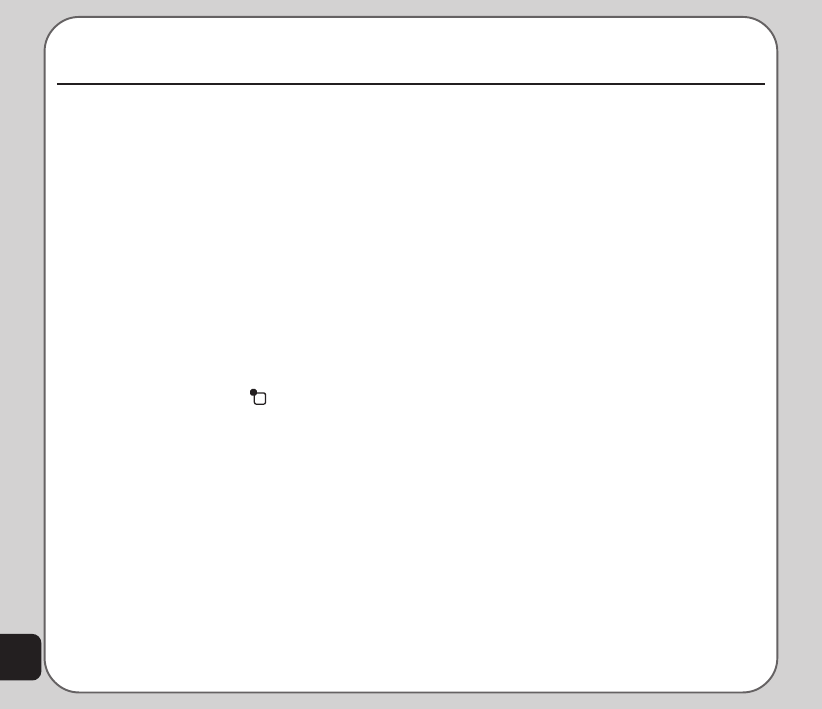
50
Media Center
Audio Player
The phone is equipped with a high quality
audio player for digital music files.
To start the audio player
1. Press the menu button on the keypad to
display the main menu screen.
2. Use the joystick to highlight the Media
Center icon.
3. Press the enter key to display the media
center menu.
4. Use the joystick to highlight the Audio
Player option from the list and press the
enter key to confirm.
The audio player opens.
5. Press the left soft key to select List and
display a list of available digital music
files.
6. Use the joystick to highlight a music file to
play and press the enter key to select it.
7. The enter key and the up, down, right, left
joystick keys act as play controls. When
you push a key, the corresponding on-
screen symbol lights up.
Joystick key assignments are as follows:
Enter/ Up Joystick: Play, Pause,
Down Joystick: Stop,
Left Joystick: Reverse,
Right Joystick: Fast Forward,
NOTE: You need to connect earphones to the earphone socket
on the bottom of the phone to listen to music files.
Adding music files
To add music files to your phone you must first
connect the phone to a computer with digital
music files.
Connect the phone to the computer USB port
using the USB cable provided.
The when the phone is connected to the
computer it will appear in Windows Explorer as
two removable disk drives. One drive is the
internal phone memory and the other is the
mini SD card if installed.
Drag and drop your digital music files to the My
Music folder in the internal phone memory, or
the Music folder in the SD card memory. If you
add files to folders other than these, you will not
be able to play them with the phone’s audio
player.
Editing Music Files
You can play a file, view file details, set a file as
a ringtone, add or remove files, or control other
settings related to the playlist, the list of songs
played by the audio player.
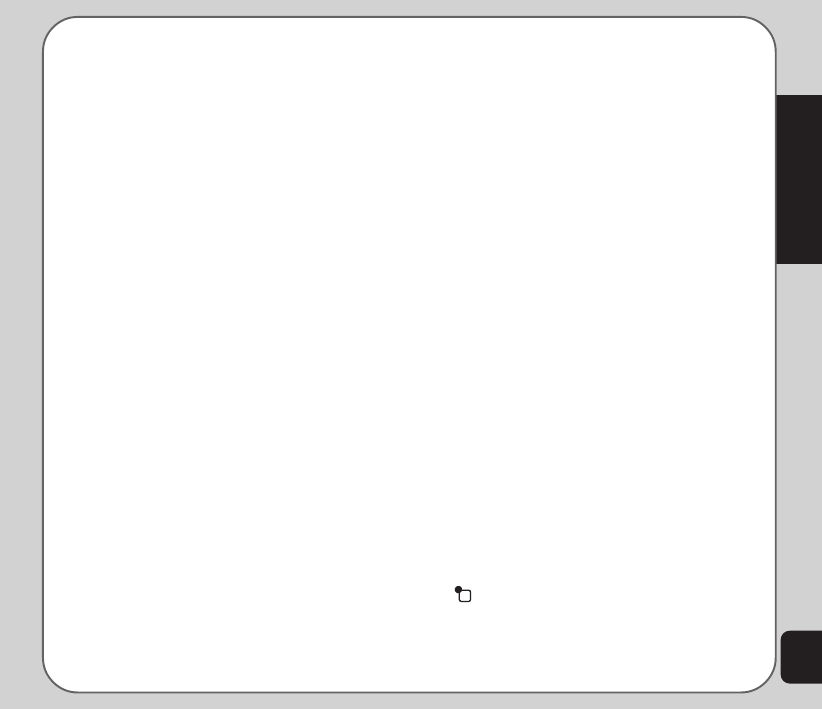
51
Media Center
To edit music files:
1. From the main menu, select Media
Center > Audio Player > List.
2. Highlight a file, then select Option.
A list of editing options appears.
To add or delete files, you must set
Option > Settings to Deactivate as
described below.
NOTE: If you want to view the ID3 tag of an MP3 file, select the
Details option.
Option > Settings contains settings to control
the playlist and the appearance of the audio
player. Select from the following options. Use
the right and left joystick keys to toggle
settings:
•Play from Handset or from Card. Set the
location of the playlist as either handset or
memory card.
•List Auto Gen. When set to Activate, a
playlist is automatically generated from
music files on your phone or memory
card. Set to Deactivate if you want to
manually add or delete files from playlists.
•Skin. Select from three different skins, or
outward appearances for the audio player.
•Loop. Select One to loop, or repeat, the
current song. Select All to repeat all the
songs in the playlist.
•Shuffle. Select Activate to randomly
repeat songs in the playlist. Select
Deactivate to play the songs in order.
•Background Play. Select Background
Play to continue listening to music files or
radio even if you leave the media center to
use other menu functions. Music stops,
however, for playing games or for making
phone calls.
FM Radio
The FM radio function provides high quality
stereo radio reception through earphones.
To start the radio:
From the main menu, select Media Center >
FM Radio.
The FM radio opens.
NOTE: You must plug in the earphones and press the button
on the microphone module for the FM radio to work.
To tune the radio, use the the left and right
joystick keys.
To control the volume, use the volume key on
the side of the phone.
To turn the radio on and off, use the down
joystick key.
To search for stations, use the up joystick key.
FM Radio Options
When the radio is displayed, press the left soft
key to display the Option menu. There are
options to use the channel list, to manually
select a frequency, search for stations, create a
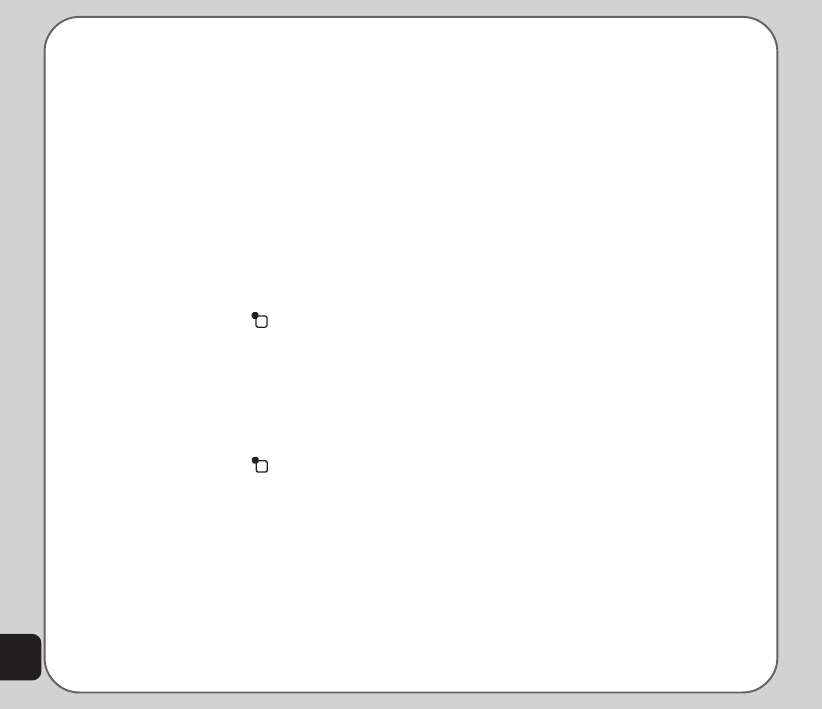
52
list of preset frequencies, and change the radio
settings.
The channel list contains preset frequencies. To
access the channel list:
1. Start the radio, then select Option >
Channel List.
The channel list is displayed.
2. Highlight any of the preset channels in the
list and press the enter key to confirm.
3. Select the Play option to play.
Select Edit to display an edit screen.
4. To edit a channel entry you must type in a
channel name and a frequency in the
fields provided.
5. Press the left soft key to save the new
preset channel.
To select a channel manually:
1. Start the radio, then select Option >
Manual Input.
2. Press the number keys to enter a
frequency for a radio station.
3. Press the left soft key to listen to the
station.
To search and create a list of preset channels
automatically:
1. Start the radio, then select Option >
Preset List.
2. Press the enter key to begin the search.
Strongest stations found while searching
are allocated a preset channel.
To select and play a preset channel:
1. Start the radio, then select Option >
Channel List.
2. Select a channel from the list, then press
the enter key to play.
To add the current station to the preset list:
While listening to a station, press and hold a
number key. The station is then set as a
preset station.
To change FM radio settings:
Start the radio, then select Option > Settings.
In the Settings submenu you can change the
skin and turn background play on or off.
Java
A selection of games created with Java
technology comes preloaded on your phone.
To start a Java game:
1. From the main menu, select Media
Center > Java.
A list of Java games appears.
2. Highlight a Java game from the list and
press the enter key to launch the game.
Java Settings
You can alter a number of Java settings and
view the resources available to Java applica-
tions using the Java Settings option.

53
Media Center
To open the Java Settings menu:
1. From the main menu, select Media
Center > Java Settings.
2. Highlight an option to change.
3. Use the right and left joystick keys to
change the setting.
NOTE: Not all settings can be changed. Some fields only
display resources available.
Games
A selection of games comes preloaded on your
phone.
To start a game:
1. From the main menu, select Media
Center > Games.
2. Highlight a game from the list displayed
and press the enter key to launch the
game.
Game Setting
You can audio and vibration of games using the
Game Settings option.
To open the Game Settings menu:
1. From the main menu, select Media
Center > Game Settings.
2. Highlight an option to change.
3. Use the right and left joystick keys to
change settings.
Melody Composer
Use the melody composer to create midi tunes
of your own. You can also edit existing midi files
on your phone.
To create a new tune:
From the main menu, select Media Center >
Melody Composer > Option > Add.
A blank music staff is displayed.
• Use the keys 1-7 to enter notes C-B.
• Each note can be pushed up or down
an octave by highlighting it with the
joystick and then using the joystick up
down action to move it up or down.
• Sharpen a note by highlighting it with
the joystick and then pressing the #
key.
• Change the length of a note by
highlighting it with the joystick and
pressing the * key.
• Add a rest using the 0 key.
• Add a vibration effect by pressing
8
.
This effect is marked with wavy lines on
the staff.
• Add an effect to turn the screen on and
off by pressing
9
. This effect is
marked by a rainbow flag on the staff.

54
• If you would like to edit your tune by
turning off the vibration or screen on /
off effects, select the effect on the staff,
then press the down joystick key to
deactivate it. An “x” then appears on
the effect. Press the up joystick key to
reactivate.
You can play your tune at any time from the
Option menu. From the Option menu, you can
also select an instrument to play your tune,
adjust the speed and save your work.
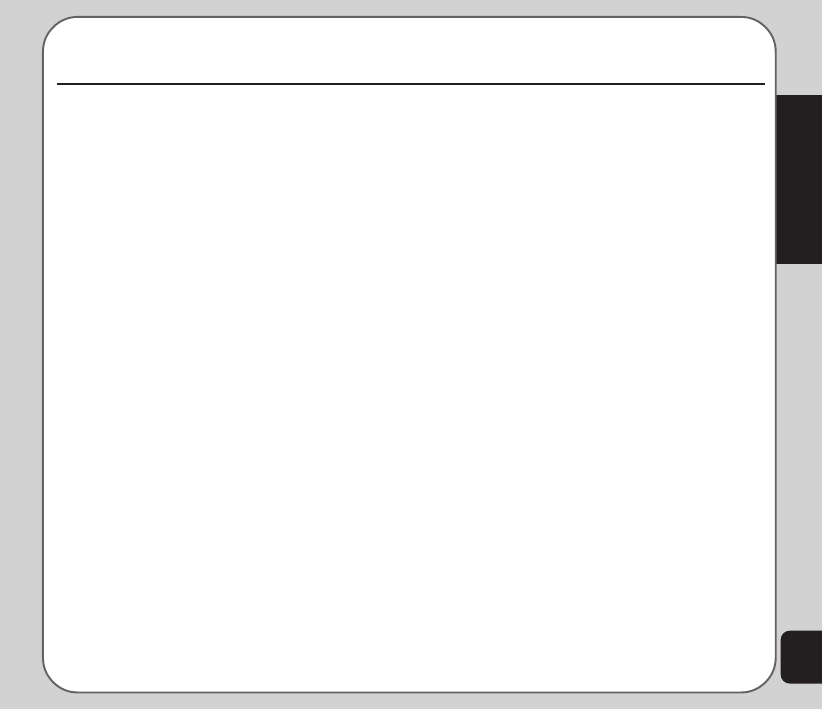
55
Organizer
Organizer
The organizer menu gives you access to a
number of features including alarms, calendar,
task list, calculator, world clock, sound recorder,
image editor, stopwatch, file manager, units
converter, currency converter, and health
manager.
File Manager
The file manager is a feature that enables you
to find and manipulate files stored in the
memory of your phone, on the SIM card, or on
a mini SD card if installed.
To open the file manager:
1. From the main menu, select Organizer >
File Manager.
Two virtual disk drives are displayed, F:
represents the mini SD memory card, and
G: represents the internal handset
memory.
2. Use the joystick to highlight a drive and
press the enter key to confirm.
Options for the selected drive are
displayed. You can open the drive and
view contents, create a new folder, or
format the drive. You can also select the
Remove option to remove a mini SD card.
Viewing drive contents
You can view the files stored in the memory of
the phone or on mini SD card using the file
manager.
To view the contents of a drive:
1. Open the file manager as described in the
“File Manager” section of this chapter.
2. Use the joystick to highlight a drive and
press the enter key to confirm.
3. Press the enter key to display the list of
folders and files stored on the selected
drive.
4. Press Option to open to view drive
contents, create a new folder, or format
the drive.
NOTE: Formatting a drive erases all the contents of the drive.
Do not select unless you have backed up important
information.
If the selected drive contains folders, you can
browse up and down the folder list using the
joystick. Press the enter key to display contents
of a highlighted folder.
While viewing folders, select Option to access
folder options, including open, create folder,
rename, delete, and sort.

56
To edit files within folders, highlight a file, then
select Options. You can forward files, show
details, rename, copy, move, delete, delete all,
or sort files.
To play image, audio, or video files, highlight
the file, then press the enter key.
Alarm
The phone can function as an alarm clock. Up
to three alarms can be programmed.
To program an alarm.
1. From the main menu, select Organizer >
Alarm.
A list of alarms is displayed.
2. Highlight an alarm to program then press
the enter key to confirm.
The Edit Alarm screen is displayed.
3. Highlight fields to edit. Enter new values
using the keypad or use the left right
joystick action to cycle through the
available options.
The Repeat function lets you define whether
the alarm sounds just once, at the same time
every day, or on specific days.
Calendar
The calendar function helps you keep track of
day-to-day tasks.
To open the calendar:
1. From the main menu, select Organizer >
Calendar.
2. The calendar is displayed.
3. Use the joystick to highlight a specific date
on the calendar and press the center
joystick button to view options for that
date.
Options include viewing tasks associated
with that day and jumping to another day.
To access tasks:
1. Open the calendar as described in the
previous procedure.
2. Use the joystick to highlight a date and
press the enter key to confirm.
The Option menu is displayed.
3. Press the enter key to view tasks already
entered for that day.
4. Highlight a task, then press the enter key
to view it.
You can also add a new task from this
menu, edit the current task, delete the
current task, delete all tasks, or send a
vCalendar.
Tasks List
You can create a task list on your phone. The
task list is a list of tasks orderd by date.
To open the Tasks List:
1. From the main menu, select Organizer >
Tasks List.
2. Use the joystick to highlight the Tasks List
option and press the enter key.
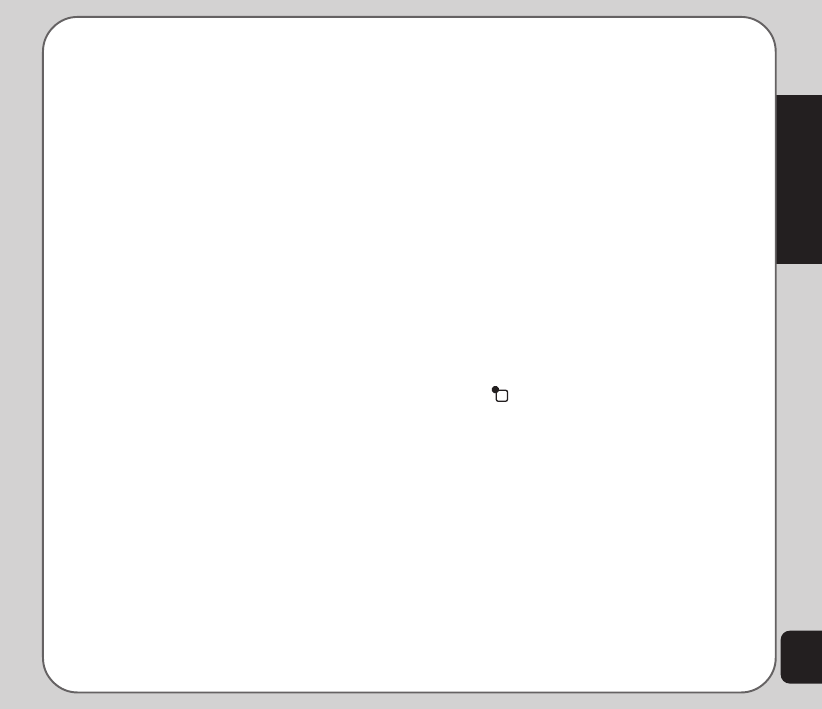
57
Organizer
The tasks list is displayed.
3. Select Add to add a new task. Complete
fields for time, content, and alarms.
4. To edit a task, highlight a task from the list
then press the enter key to confirm.
The Option menu is displayed.
From the option menu you can view the
current task, add a new task, edit the
current task, delete the current task,
delete all the tasks, or send a vCalendar.
5. Highlight an option from the option menu
and press the enter key to confirm.
Calculator
The phone includes a calculator function.
To use the calculator:
1. From the main menu, select Organizer >
Calculator.
The Calculator is displayed.
2. Use the keypad to enter numbers and the
joystick to select the +, - , ÷÷
÷÷
÷ , × functions.
3. Press the enter key to enter = and
compute.
World Clock
The world clock function enables you to see the
time in various major cities of the world.
To open the world clock:
1. From the main menu, select Organizer >
World Clock.
2. Use the joystick to highlight the Calculator
option and press the enter key to confirm.
The World Clock is displayed.
The clock displays a map and the current time
in your own location. You can move the location
east or west.
Voice Recorder
The voice recorder lets you record and play
back sounds.
To open the voice recorder:
1. From the main menu, select Organizer >
Voice Recorder.
The Voice Recorder is displayed.
2. Use the joystick to highlight an existing file
from the list and press the enter key to
confirm. Alternatively, press the left soft
key to display the Option menu.
From the option menu you can make a
new recording, play the current recording,
append the current recording, rename the
current recording, delete the current
recording, delete all recordings, or change
settings.
3. Highlight an item from the option menu
and press the enter key to confirm.

58
Image editor
Use the Image Editor to create and edit
images.
To open the Image Editor:
Highlight an image from the list to edit using the
joystick, or select Add to add a new image.
Press the enter key to confirm.
Use the
5
key on the keypad to toggle
between the pencil tool and the cursor tool.
Move around the screen using the other
number keys.
Stopwatch
The phone includes a stopwatch function.
There are two styles of stopwatch to choose
from. The typical stopwatch is a simple timer
that can be started and stopped using the enter
key.
The nWay timer consists of four timers that can
be started by pressing the joystick up, down,
left, or right. Only one timer can be running at
any time. The total time appears at the top of
the screen.
To use the stopwatch:
1. From the main menu, select Organizer >
Stopwatch.
The Stopwatch menu screen is displayed.
2. Select the type of stopwatch you want to
use and press the enter key to confirm.
Units Converter
The Units converter is a useful tool to convert
weights and measures from imperial (pounds,
feet, and inches) to metric or metric to imperial.
To use the unit converter:
1. From the main menu, select Organizer >
Units Converter.
The Units Converter menu is displayed.
2. Use the joystick to highlight the Weight or
Length option and press the enter key to
confirm.
3. With the top field highlighted, use the left
right joystick action to select a conversion
type e.g. Km and Miles.
4. Highlight either of the measurement fields,
e.g. Km and Miles, using the joystick.
5. Input a number using the keypad.
6. Press the enter key to confirm.
The measure is converted and displayed.
Currency Converter
The currency converter is a useful tool to help
you convert one currency to another.
To use the currency converter:
1. From the main menu, select Organizer >
Currency Converter.
The Currency Converter is displayed.

59
Organizer
2. Use the keypad to enter a conversion
factor and press the center button to
confirm. Use the # key to enter a decimal
point.
3. With the top field highlighted, use the left
right joystick keys to select the direction of
conversion (e.g. 2:1 or 1:2).
4. Use the joystick to highlight the Local or
Foreign currency field and enter a number
using the keypad. Use the # key to enter a
decimal point.
5. Press the enter key to display the result.
Health Manager
The health manager includes a Body Mass
Index (BMI) calculator, and a menstrual cycle
chart.
To use the BMI calculator:
1. From the main menu, select Organizer >
Health > BMI.
2. With the top field highlighted, use the left
right joystick keys to enter your sex, Male
or Female.
3. Use the joystick to highlight the height and
weight fields and enter a value for each.
4. Press the enter key to calculate your BMI.
To use the menstrual cycle calculator:
1. From the main menu, select Organizer >
Health > Menstrual.
2. Use the keypad to enter the date of the
start of your last menstrual cycle and the
days of an average period.
Press the center joystick button to
confirm.
Your menstrual cycle chart is then
displayed.
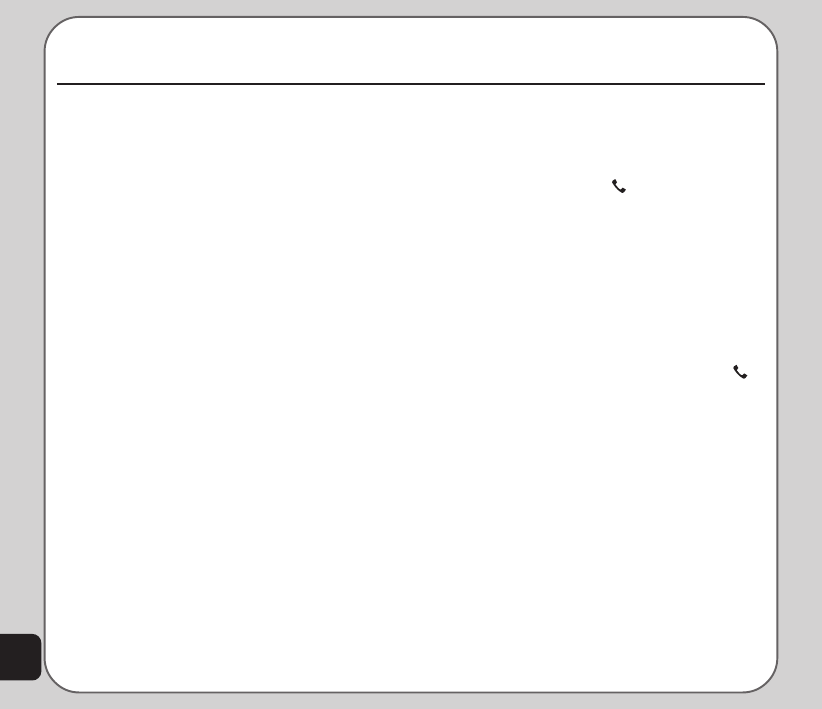
60
Network
The Network menu lets you view and change
network settings.
Service Provider Settings
The service provider settings are dependent
upon your service provider. If you have any
questions about your service provider settings,
see your service provider for details.
To access service provider settings:
1. From the main menu, select Network >
Service Provider Settings.
2. Highlight an option to change.
3. Press the enter key to change the
highlighted setting.
WAP
Use the WAP menu to set the homepage,
bookmarks, view recent pages, enter an
internet address, service inbox, and change
settings.
To open the WAP menu:
1. From the main menu, select Network >
WAP.
2. Highlight an option to change.
3. Press the enter key to change the
highlighted setting.
Browsing WAP pages
Browsing WAP pages is much like browsing
web pages with your computer. However, rather
than using a mouse, you navigate with the
joystick keys and with the call key.
Scrolling
Some WAP pages are longer than the phone’s
screen. To scroll up or down a page, press and
hold the up or down joystick key.
Viewing Links
Web links appear as colored or underlined, just
as on a computer. To view a link, press the
call key.
WAP Settings
Many important WAP settings are dependent
upon your service provider’s system setup.
Contact your service provider for details.
If, as part of your WAP settings, you need to
change the WAP proxy IP address, please refer
to the following instructions.
Changing the WAP Proxy IP Address
One or more WAP profiles should already be
set up before changing the IP address.

61
Network
1. Select WAP > Settings > Profiles. A list
of available profiles appears.
2. Select a profile, then press the enter key.
3. Select Profiles
A list of fields appears. Select Connection
Type. Select from Connection-oriented,
Connectionless, or HTTP connection types.
WAP Push
WAP Push is a method for sending multimedia
content to your phone. If your service provider
offers WAP push services, you can use WAP
push to receive such content as wallpaper,
ringtones, or java games. The message is sent
as a WAP accessible URL, or web address.
Set WAP Push settings in WAP > Settings.
Receive WAP Push content in WAP > Push
Inbox.
Data Account
The Data Account menu provides access to
GSM data and GPRS settings.
STK
SIM Application Toolkit (STK) technology acts
as a bridge between your SIM card and your
service provider’s network, enabling your
service provider to make SIM card updates,
send you SMS messages, and offer other
services via your SIM card.
If your service provider offers STK services, an
additional item with the name given by the
service provider appears in the networking
menu when you select Networking from the
main menu.
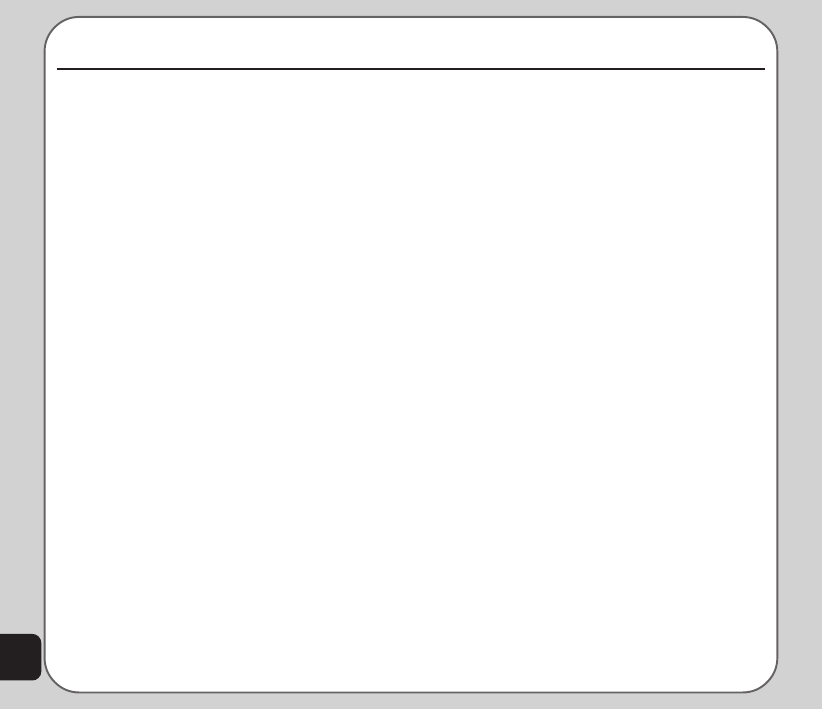
62
Appendix
Additional Information
The use of this equipment may be subject to
local rules and regulations. The following rules
and regulations may be relevant in some or all
areas.
FCC Regulations
This model phone complies with part 15 of the
FCC Rules. Operation is subject to the
condition that this device does not cause
harmful interference.
This device complies with Part 15 of the FCC
Rules. Operation is subject to the following two
conditions:(1) this device may not cause
harmful interference and (2) this device must
accept any interference received, including
interference that may cause undesired
operation.
This equipment has been tested and found to
comply with the limits for a Class B digital
device, pursuant to Part 15 of the FCC Rules.
These limits are designed to provide reason-
able protection against harmful interference in
a residential installation. This equipment
generates, uses and can radiate radio
frequency energy and, if not installed and used
in accordance with the instructions, may cause
harmful interference to radio communications.
However, there is no guarantee that interfer-
ence will not occur in a particular installation If
this equipment does cause harmful interfer-
ence to radio or television reception, which can
be determined by turning the equipment off and
on, the user is encouraged to try to correct the
interference by one or more of the following
measures:
• Reorient or relocate the receiving
antenna.
• Increase the separation between the
equipment and receiver.
• Connect the equipment into an outlet
on a circuit different from that to which
the receiver is connected.
• Consult the dealer or an experienced
radio/TV technician for help.
Changes or modifications not expressly
approved by the party responsible for compli-
ance could void the user‘s authority to operate
the equipment.
The antenna(s) used for this transmitter must
not be co-located or operating in conjunction
with any other antenna or transmitter.
This EUT is in compliance with SAR for general
population /uncon-trolled exposure limits in
ANSI/IEEE C95.1-1999 and had been tested in
accordance with the measurement methods
and procedures specified in OET Bulletin 65
Supplement C.
European Notice
Products with the mark comply with the Radio
& Telecommunication Terminal Equipment

63
Phonebook
Directive (1999/5/EEC), the Electromagnetic
Compatibility Directive (89/336/EEC) and the
Low Voltage Directive (73/23/EEC) - as
amended by Directive 93/68/ECC - issued by
the Commission of the European Community.
Compliance with these directives implies
conformity to the following European Stan-
dards:• 1999/5/EEC Radio & Telecommunica-
tion Terminal Equipment Directive
(R&TTE) EN 301 511
• Specific Absorption Rate (SAR)
Standard: EN 50360, EN 50361
• 73/23/EEC Low Voltage Directive
(LVD) Standard: EN 60950:2000
• 89/336/EEC Electromagnetic Compat-
ibility (EMC-Directive) Standard: EN
301489-1/7
• The manufacturer cannot be held
responsible for modifications made by
the user and the consequences thereof,
which may alter the conformity of the
product with the mark.
RF Exposure Information
(SAR)
This model phone meets the government’s
requirements for exposure to radio waves.
This phone is designed and manufactured not
to exceed the emission limits for exposure to
radio frequency (RF) energy set by the Federal
Communications Commission of the U.S.
Government.
The exposure standard for wireless mobile
phones employs a unit of measurement known
as the Specific Absorption Rate, or SAR. The
SAR limit set by the FCC is 1.6W/kg. Tests for
SAR are conducted using standard operating
positions accepted by the FCC with the phone
transmitting at its highest certified power level
in all tested frequency bands. Although the
SAR is determined at the highest certified
power level, the actual SAR level of the phone
while operating can be well below the maximum
value. This is because the phone is designed to
operate at multiple power levels so as to use
only the power required to reach the network. In
general, the closer you are to a wireless base
station antenna, the lower the power output.
The highest SAR value for the model phone as
reported to the FCC when tested for use at the
ear is 0.193 W/kg and when worn on the body,
as described in this user guide, is 0.345 W/kg.
(Body-worn measurements differ among phone
models, depending upon avail-able enhance-
ments and FCC requirements.)
While there may be differences between the
SAR levels of various phones and at various
positions, they all meet the government
requirement.
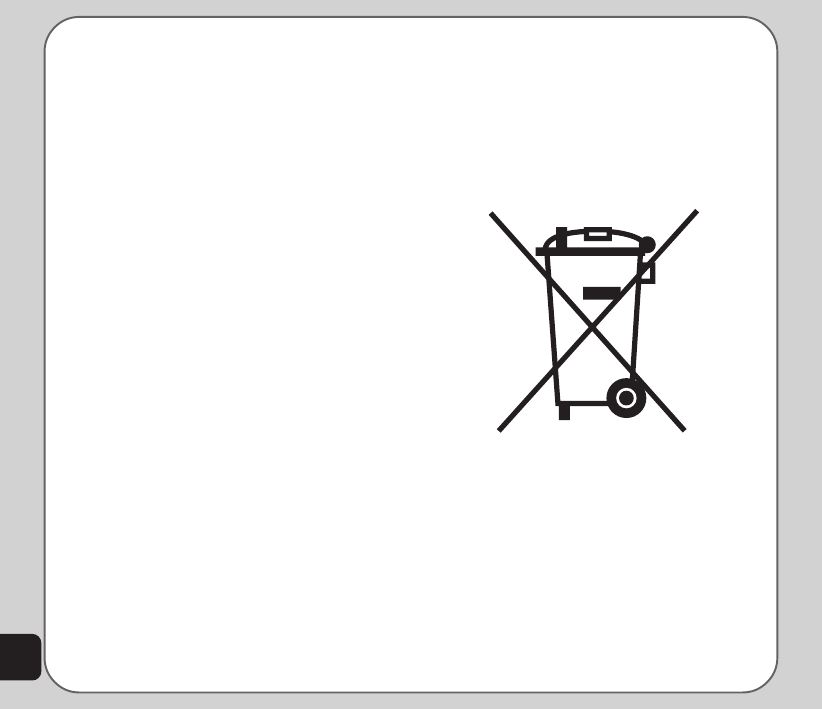
64
The FCC has granted an Equipment Authoriza-
tion for this model phone with all reported SAR
levels evaluated as in compliance with the FCC
RF exposure guidelines. SAR information on
this model phone is on file with the FCC and
can be found under the Display Grant section of
tap://www.fcc.gov/oet/fccid after searching on
FCC ID: MSQV66
For body worn operation, this phone has been
tested and meets the FCC RF exposure
guidelines for use with an accessory that
contains no metal and the positions the
handset a minimum of 1.5 cm from the body.
Use of other enhancements may not ensure
compliance with FCC RF exposure guidelines.
If you do not use a body-worn accessory and
are not holding the phone at the ear, position
the handset a minimum of 1.5 cm from your
body when the phone is switched on.
Proper Disposal
When the phone reaches the end of its lifetime,
do not dispose of it by throwing it into the trash.
Cell phones contain potentially hazardous
materials which are dangerous to the environ-
ment if not disposed of properly. Dispose of the
phone by taking it to a cell phone collection or
recycling point. Contact your dealer for
information or assistance.